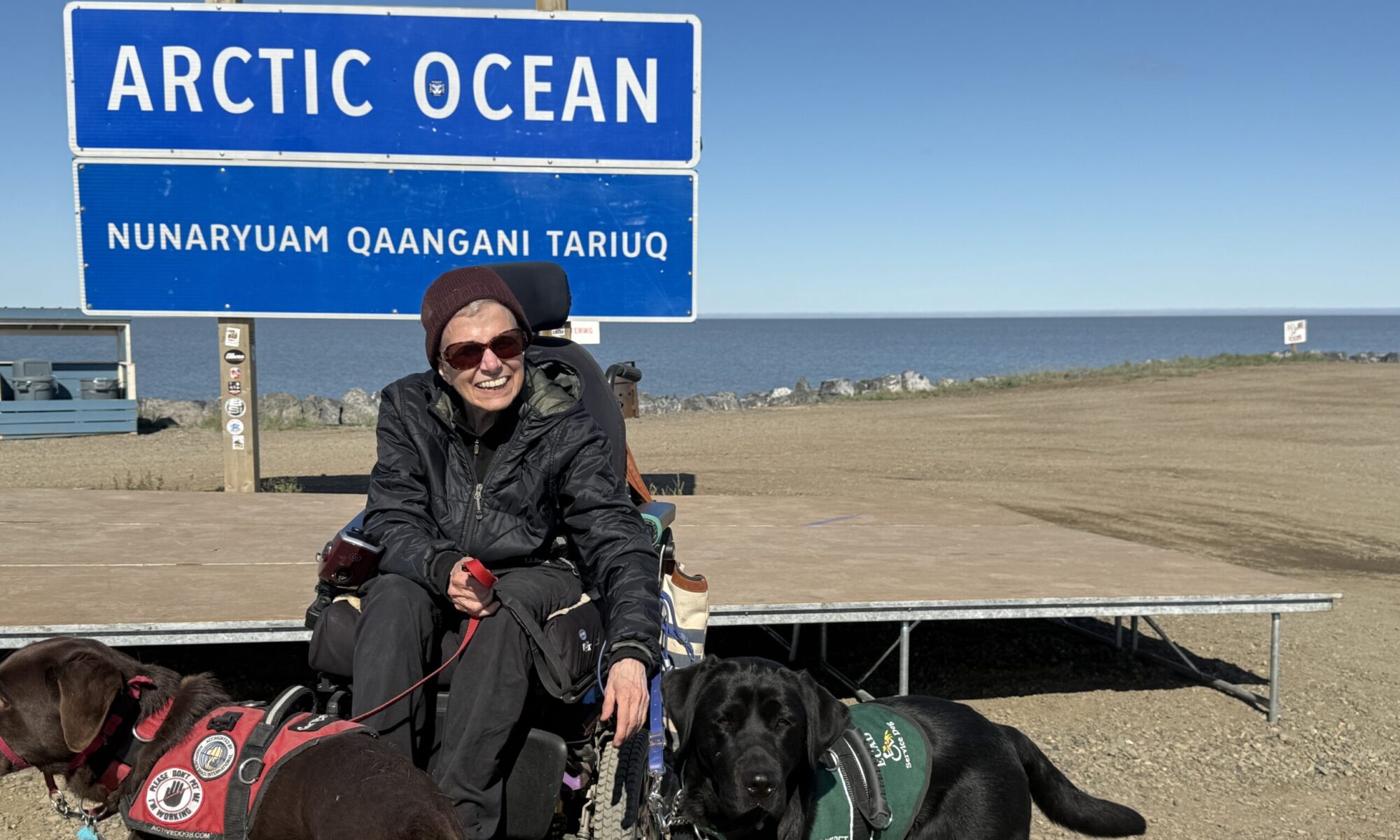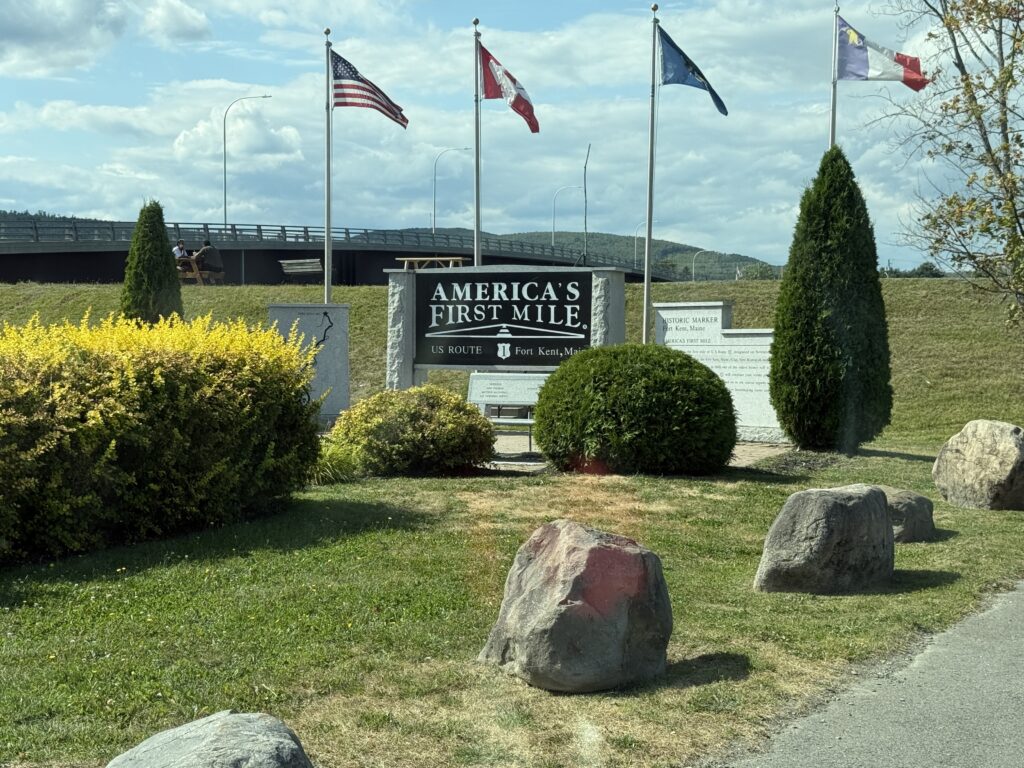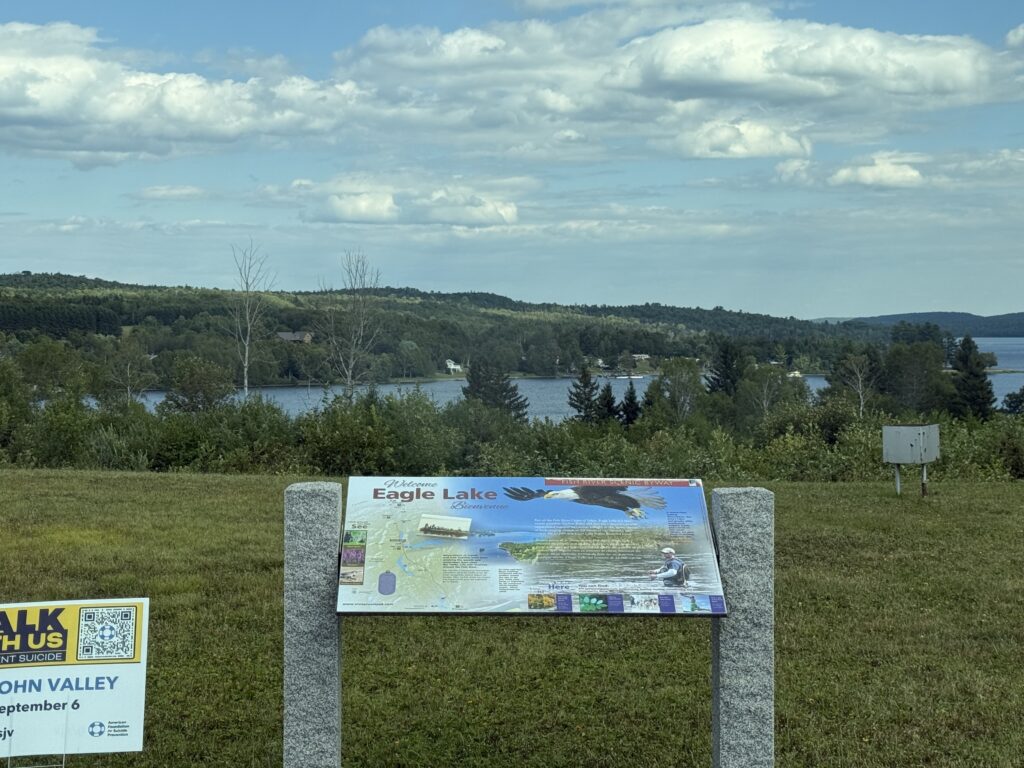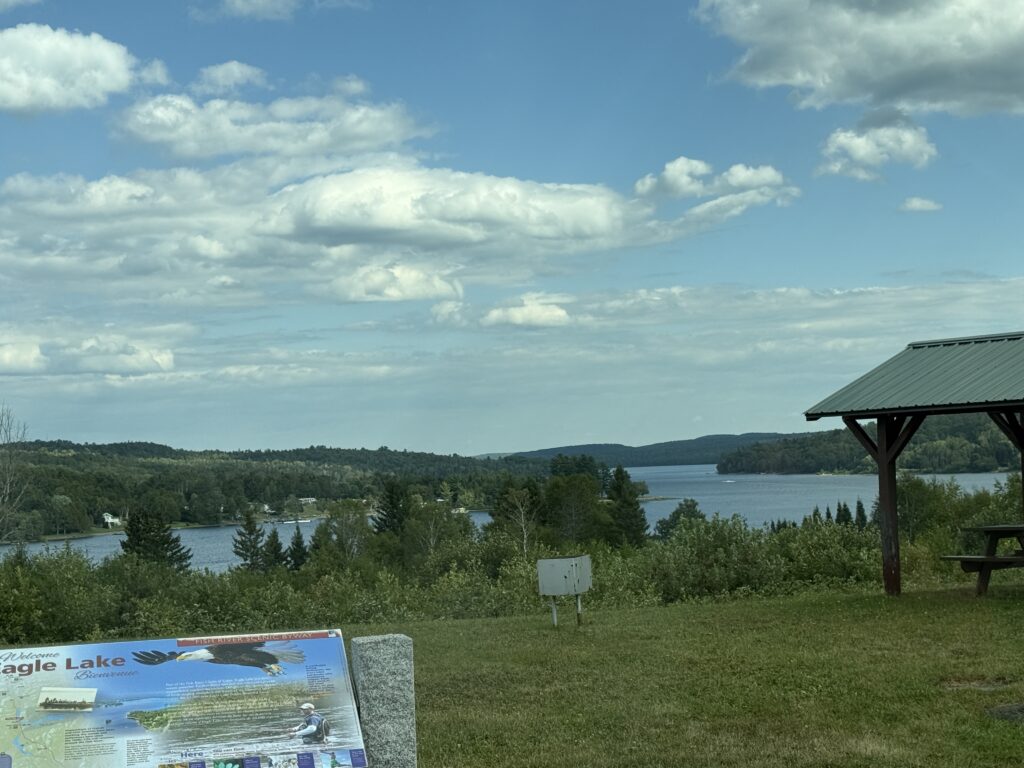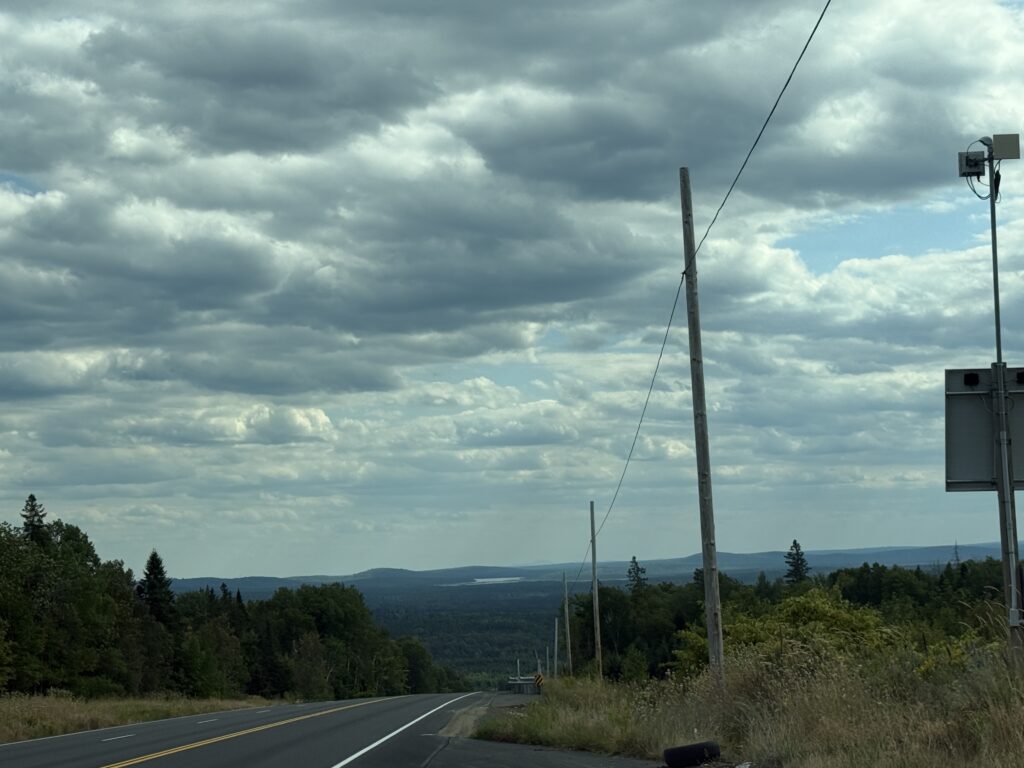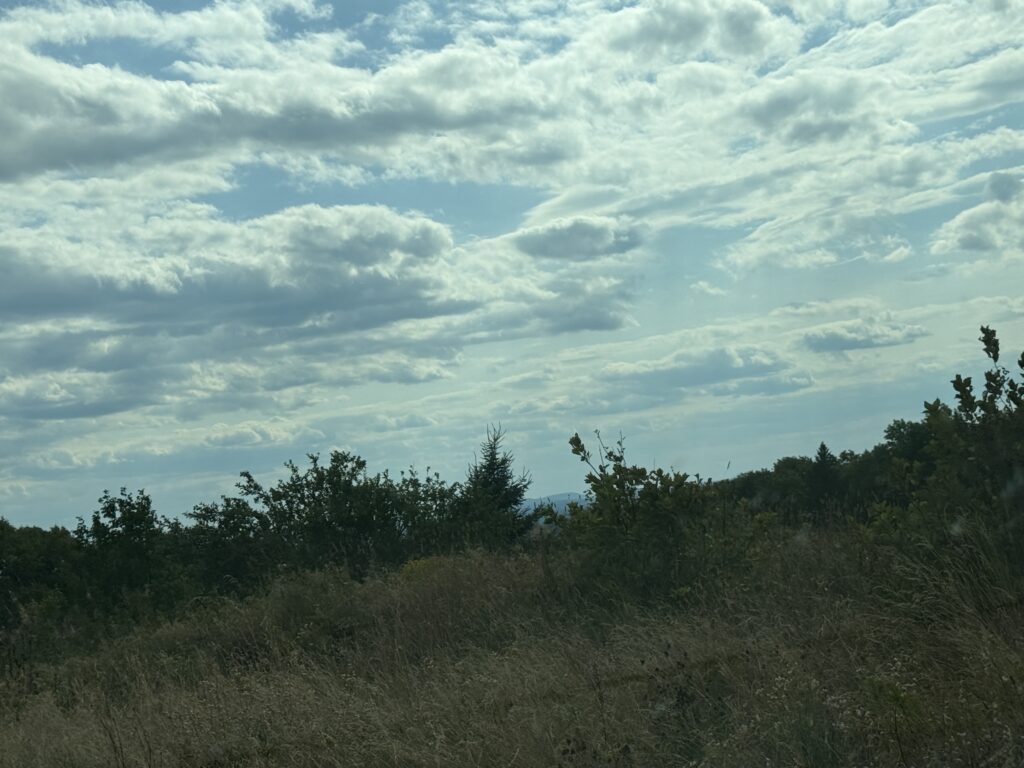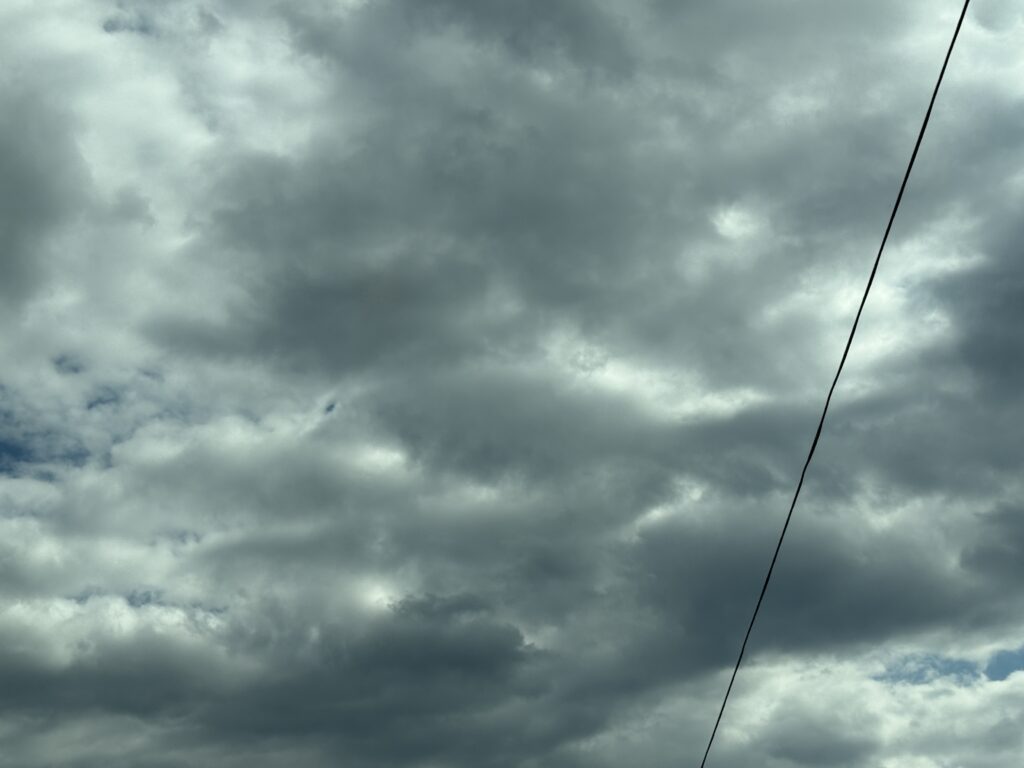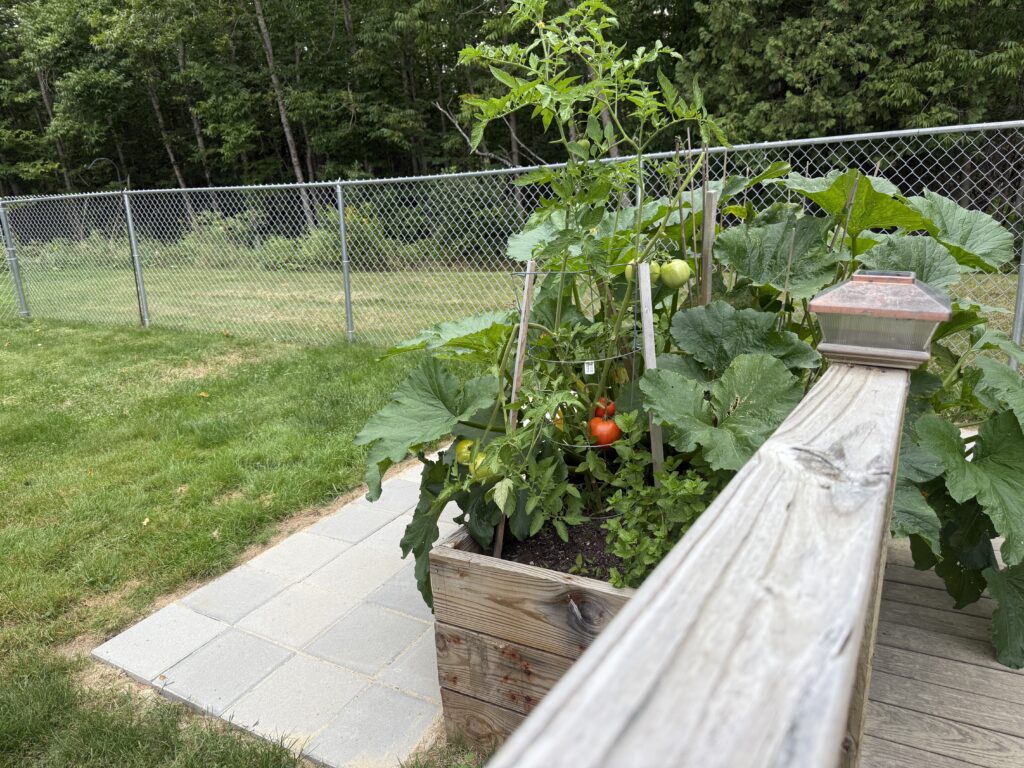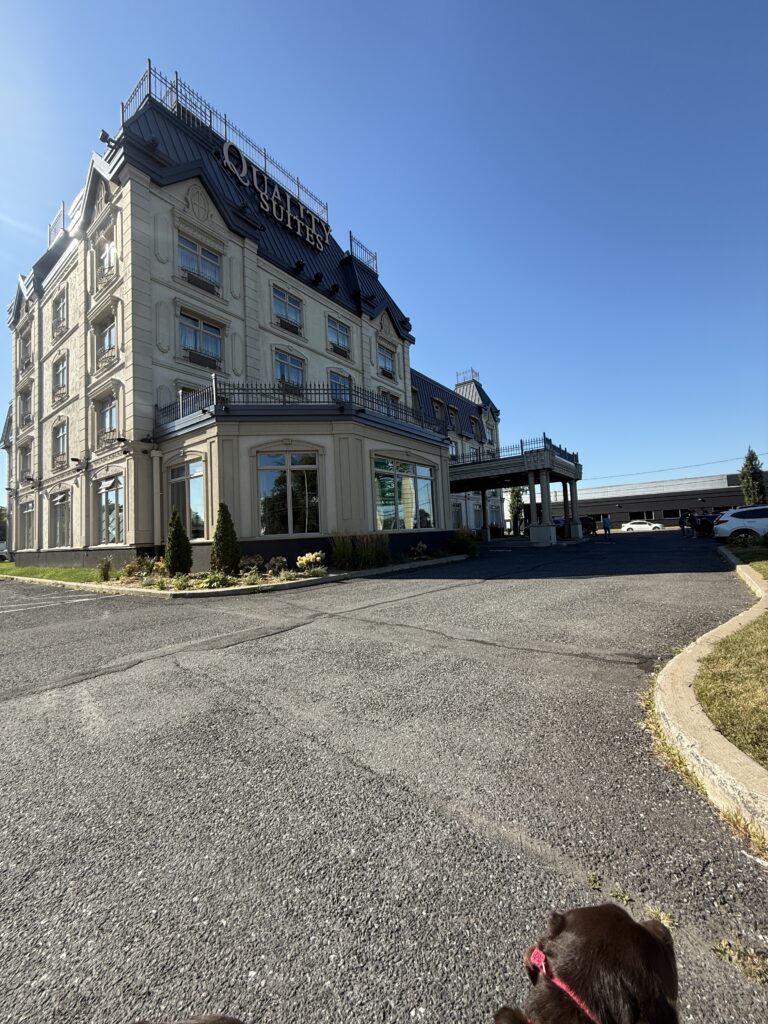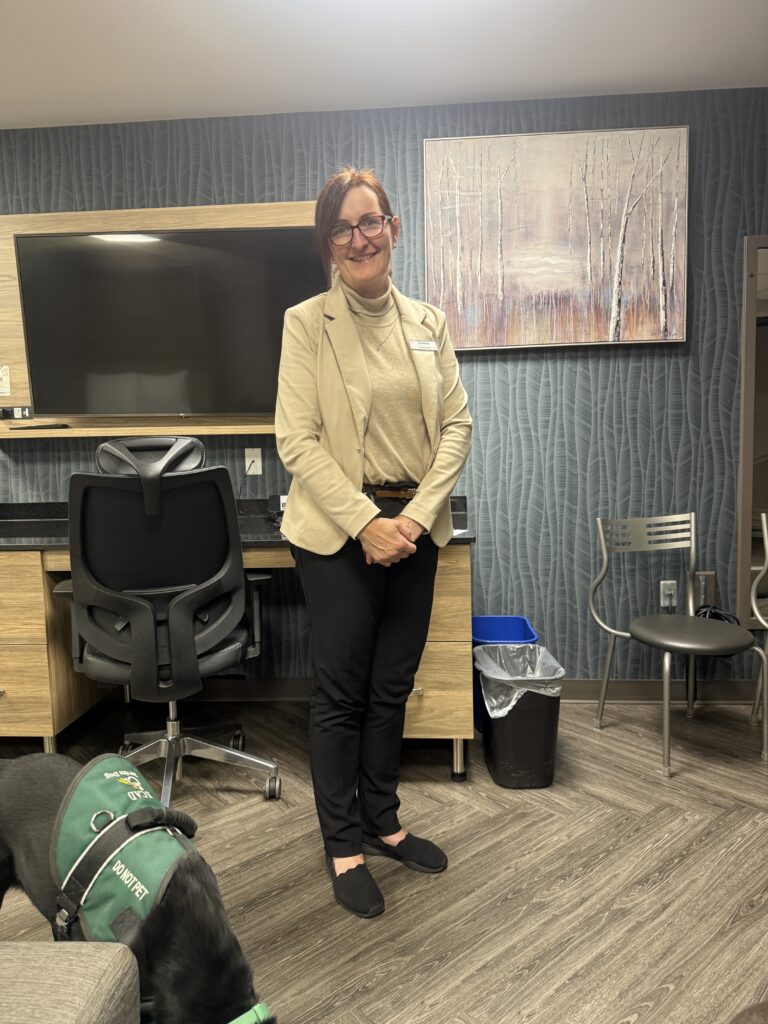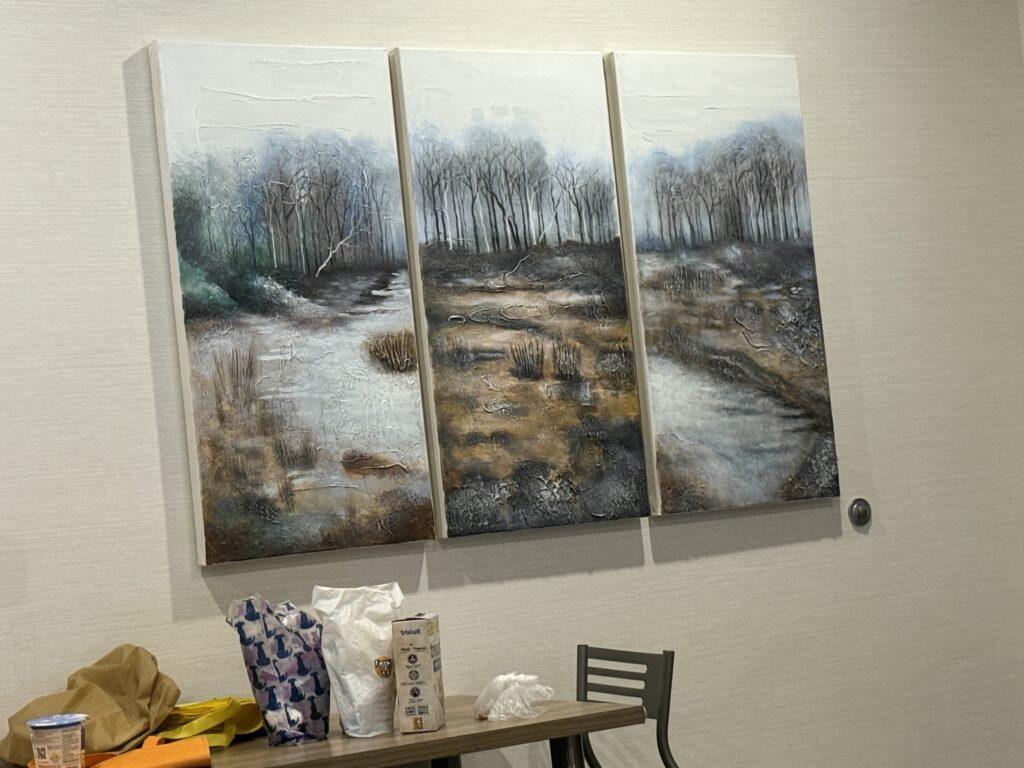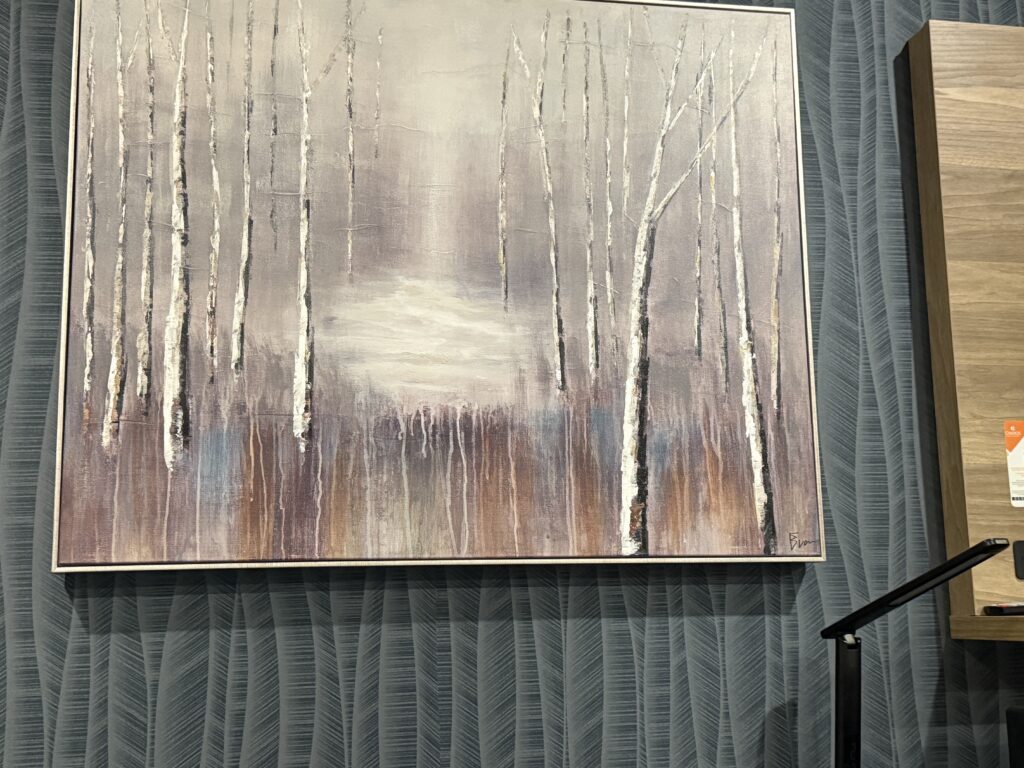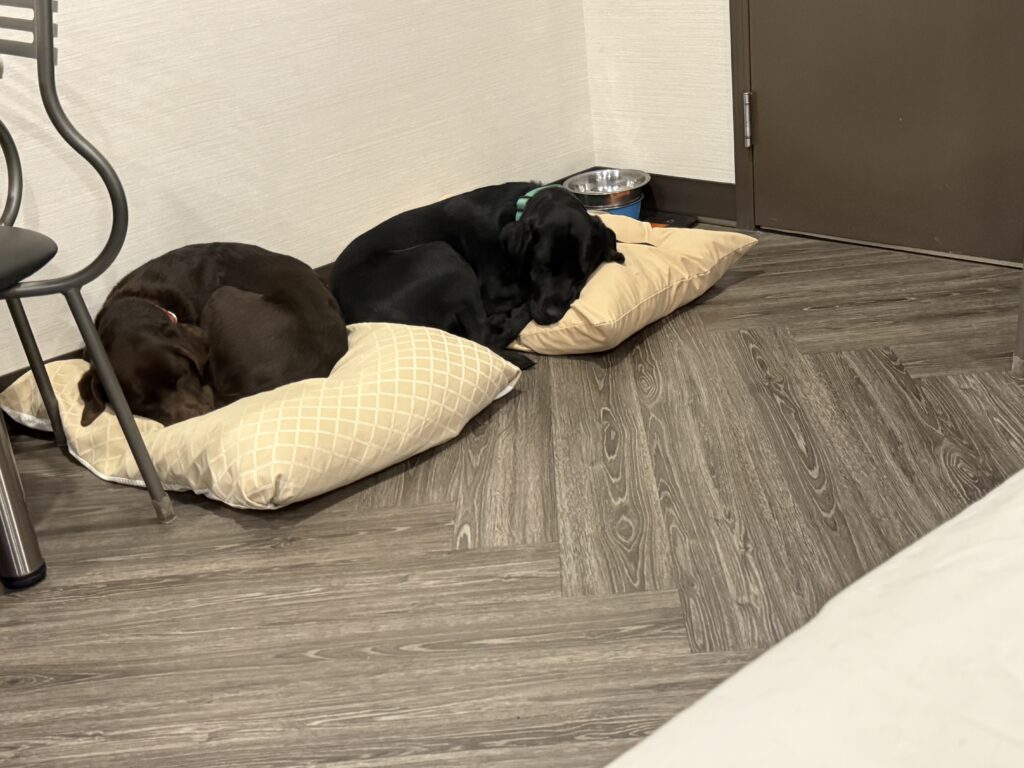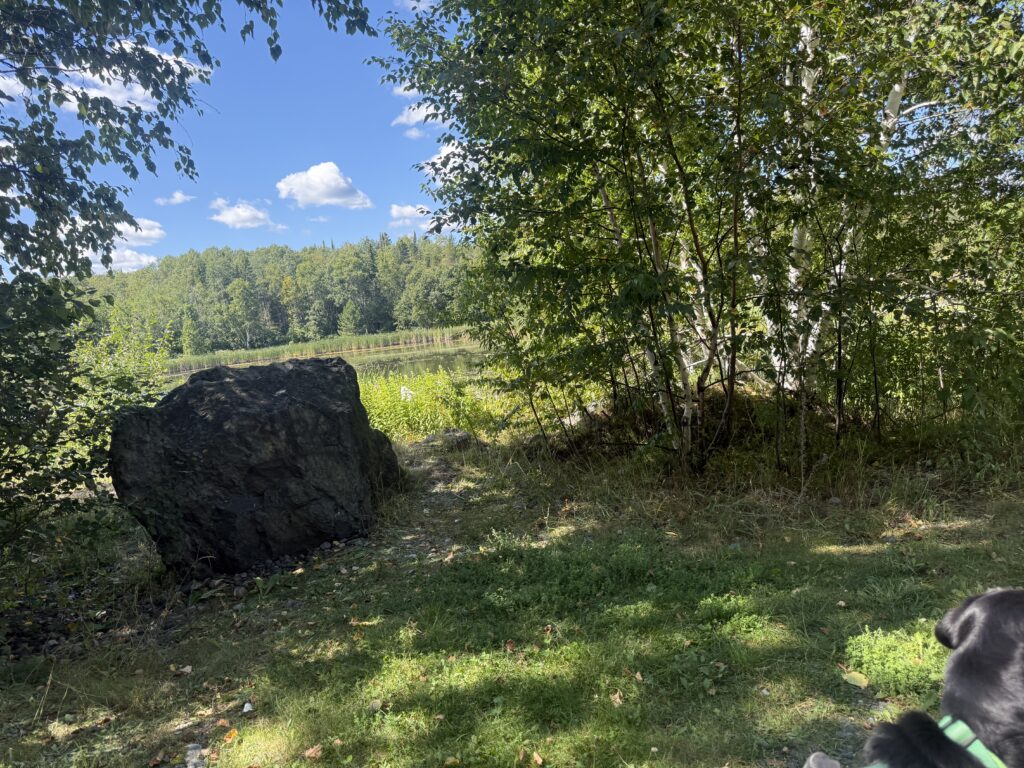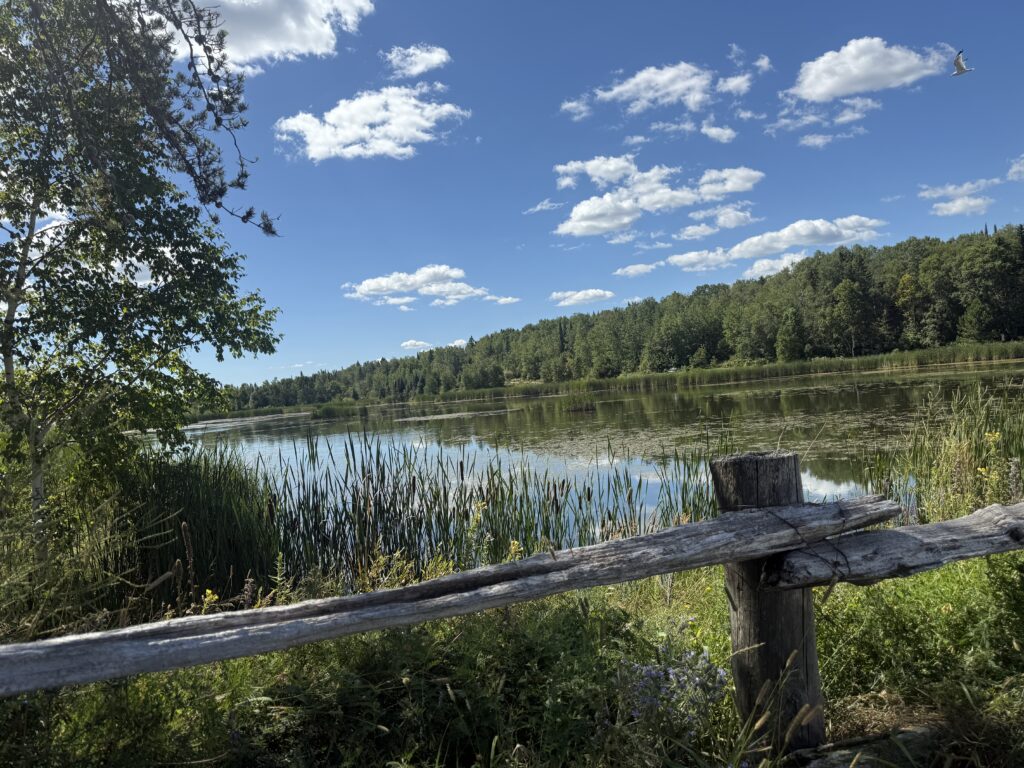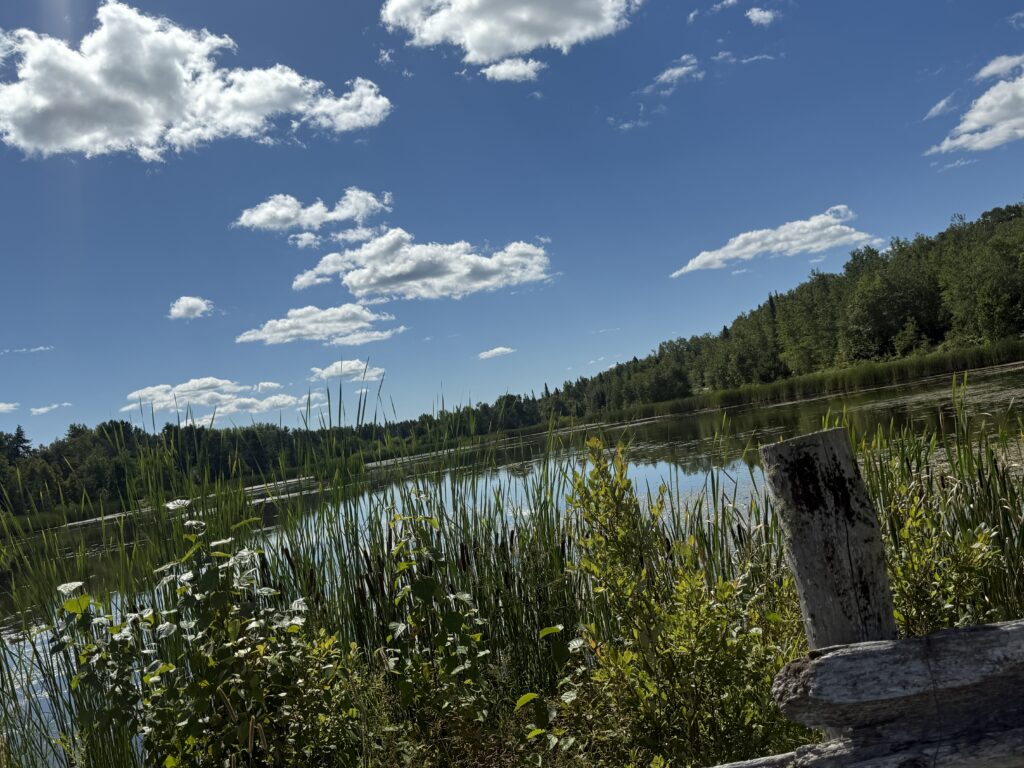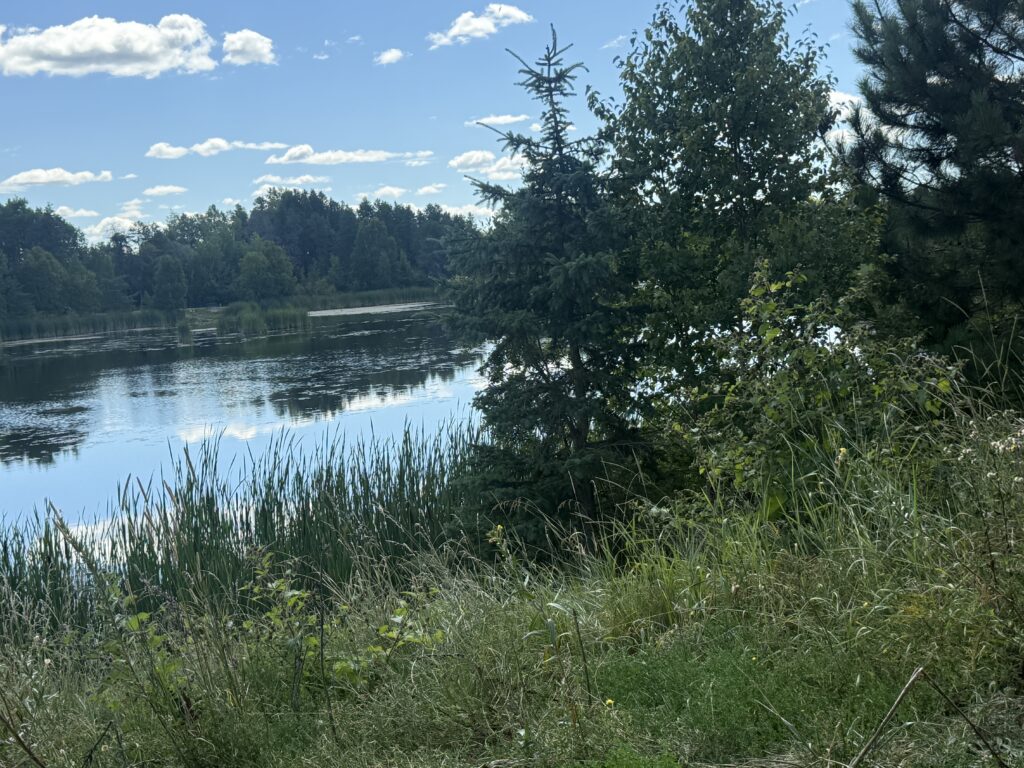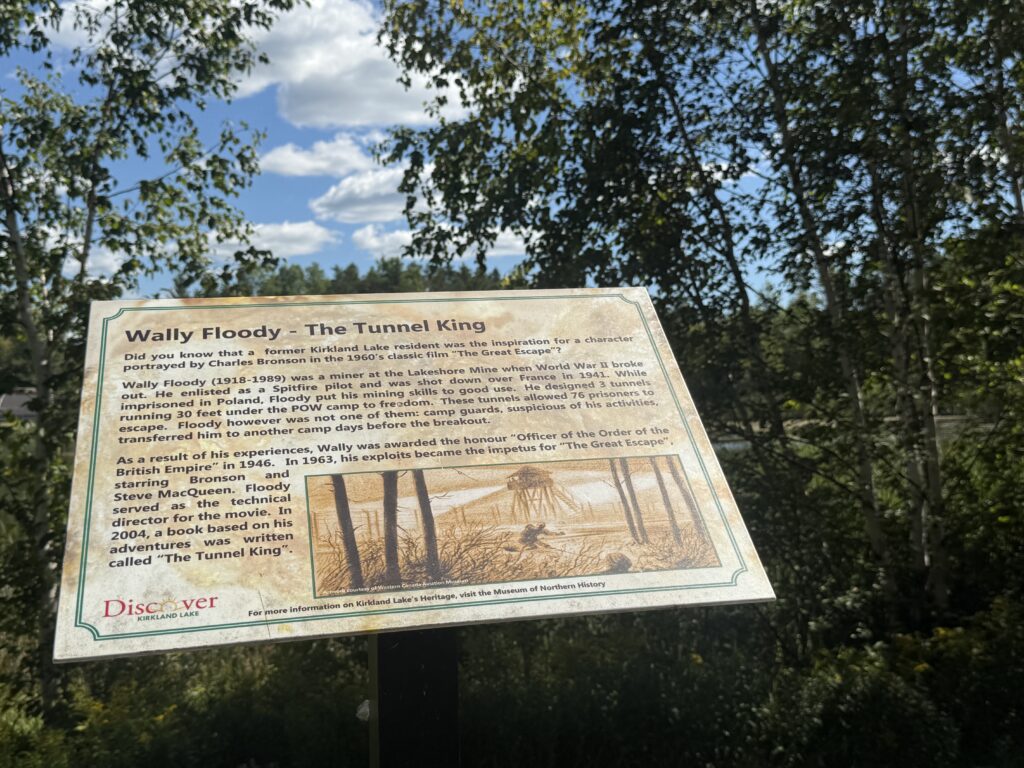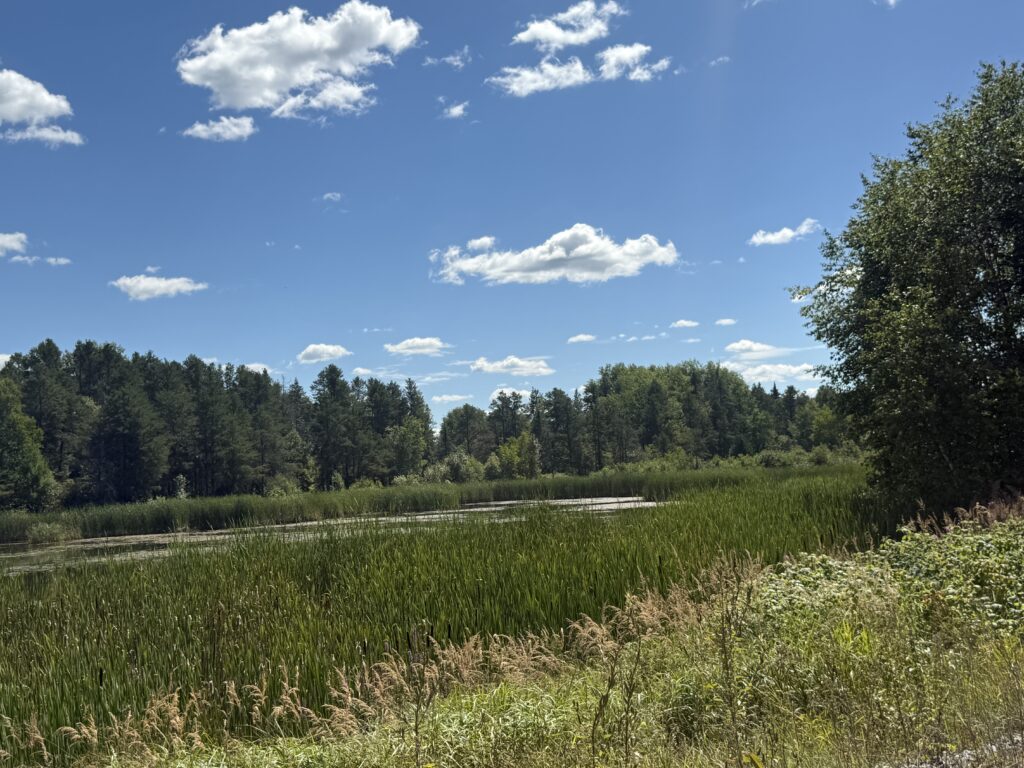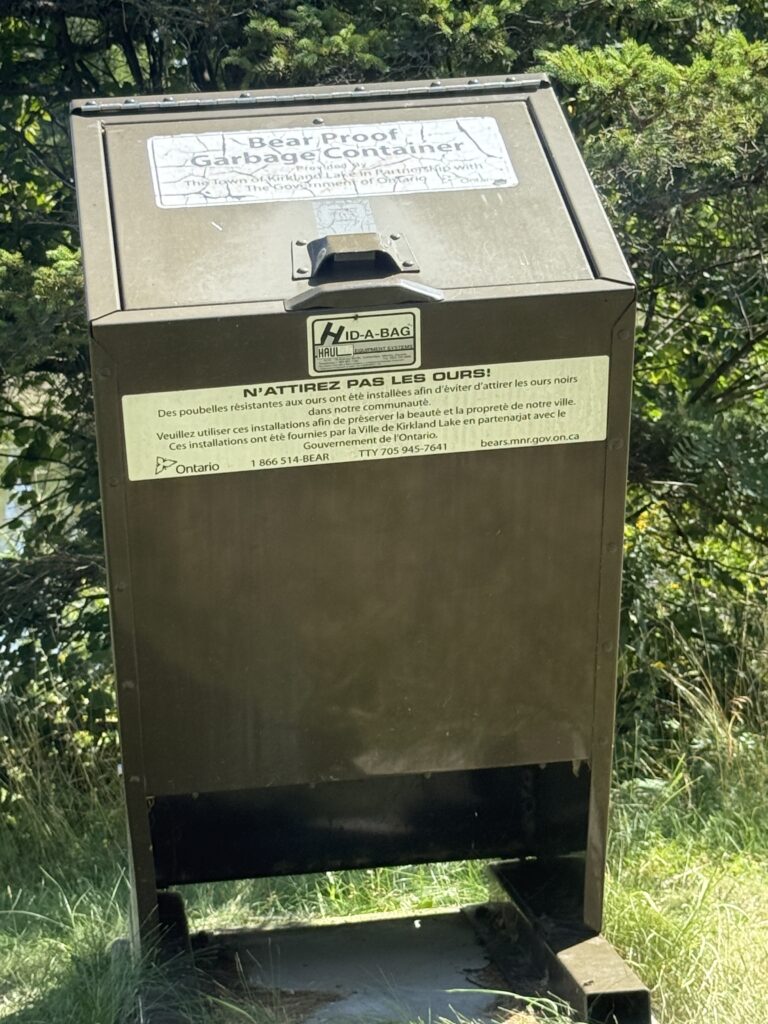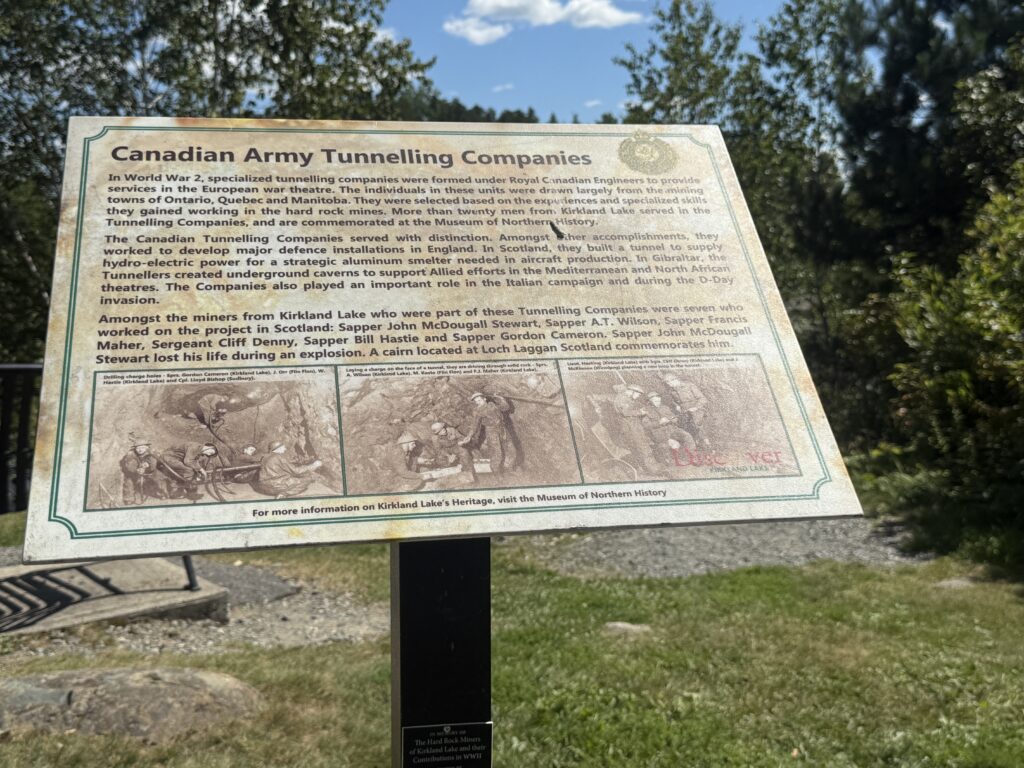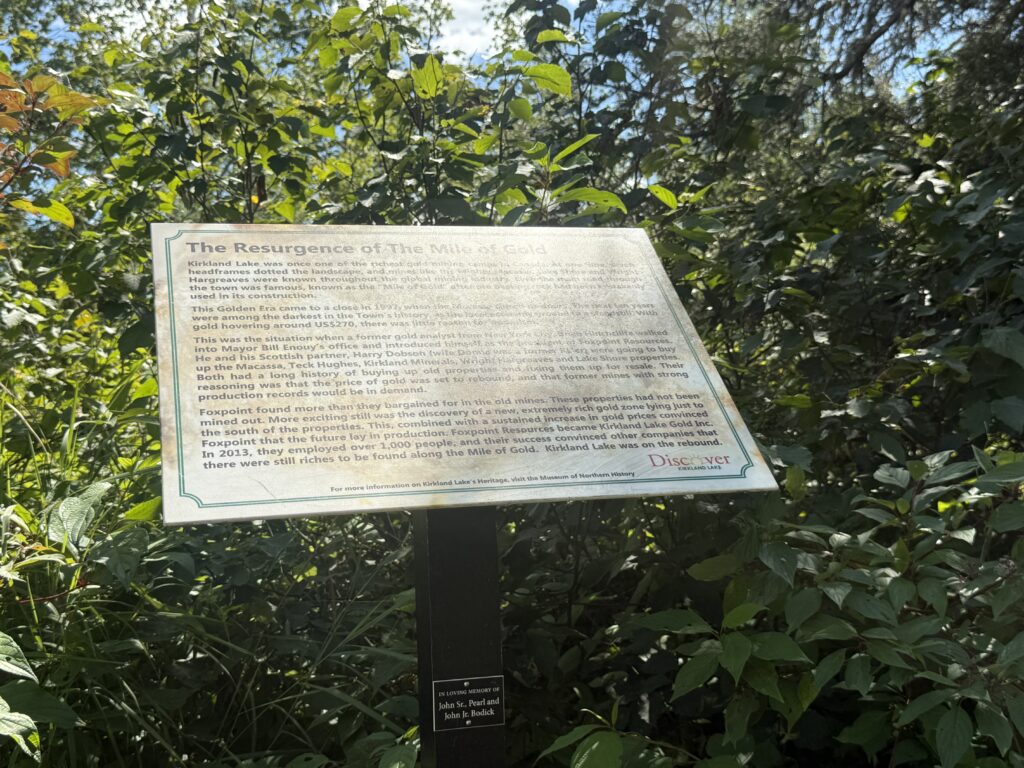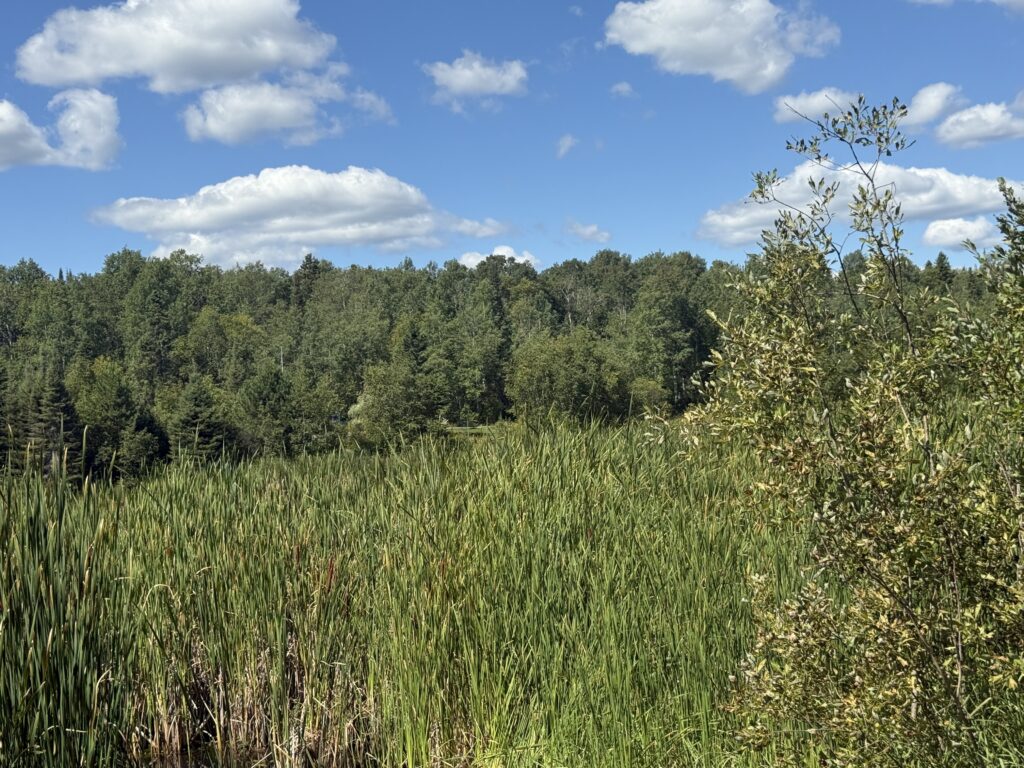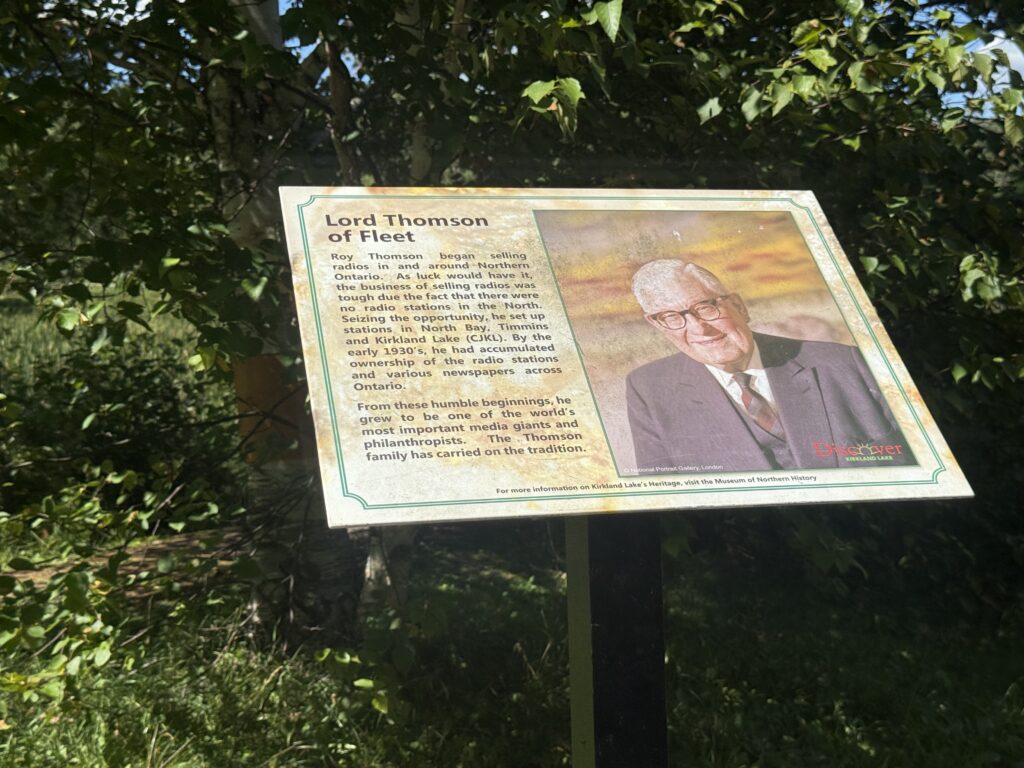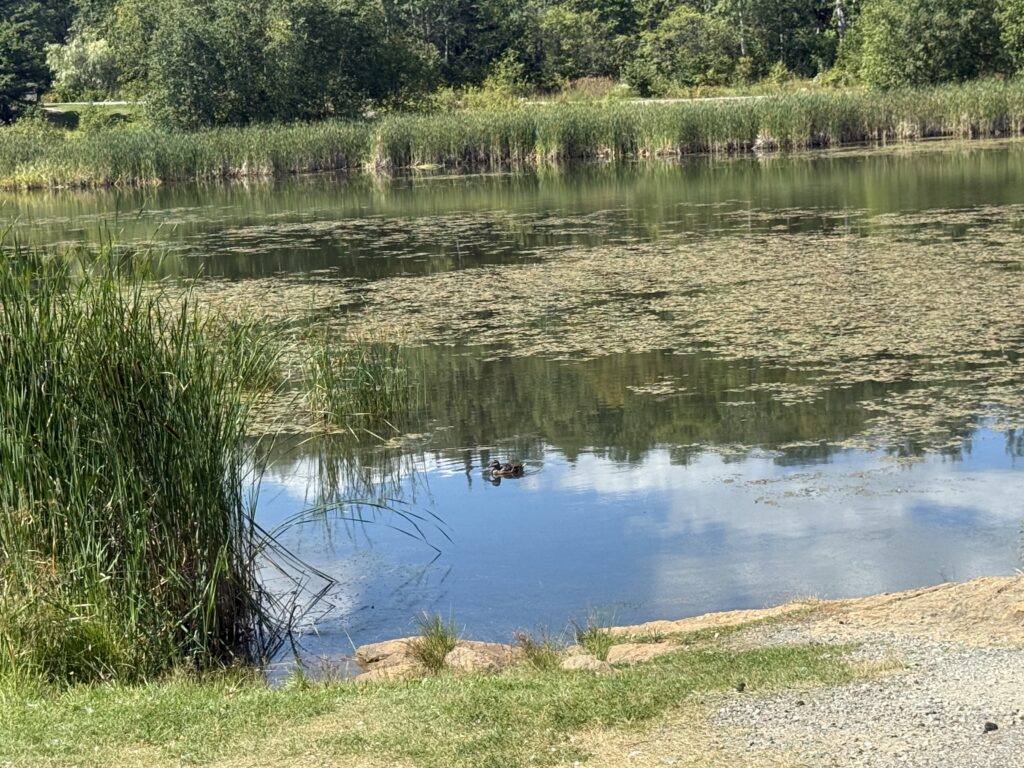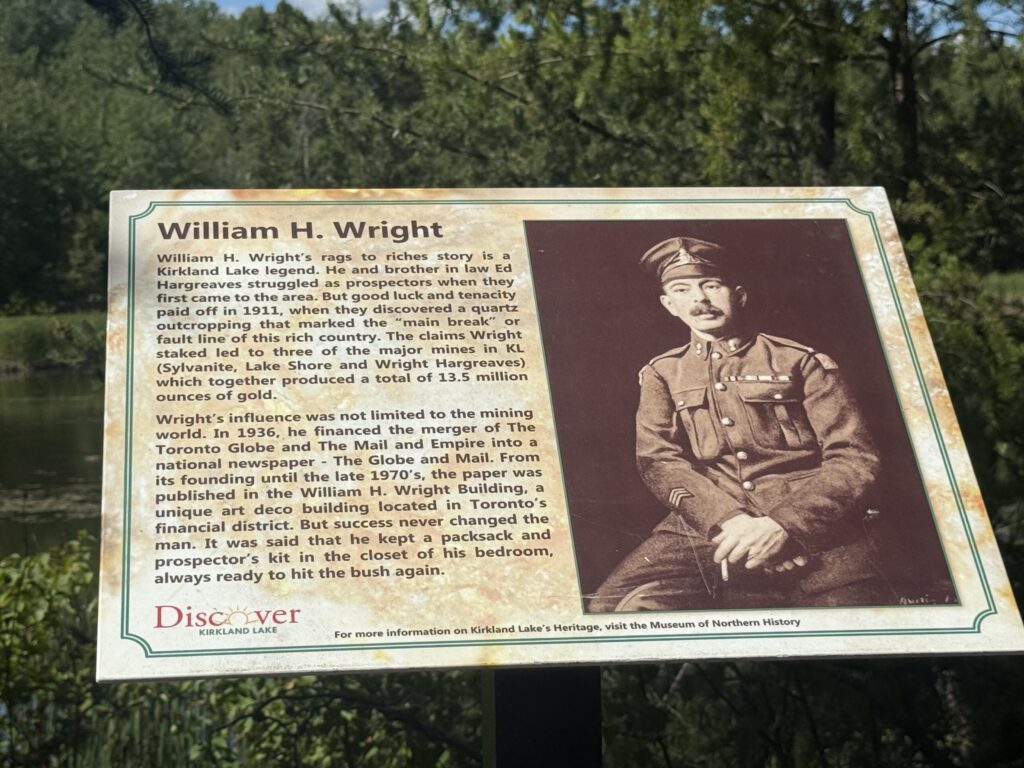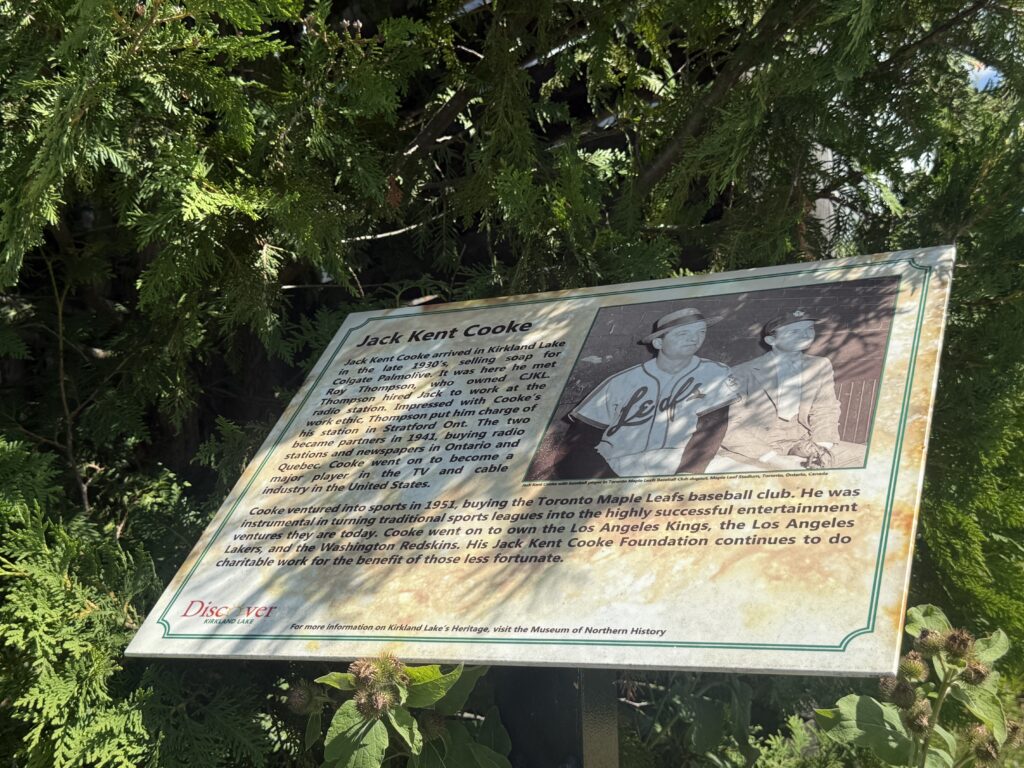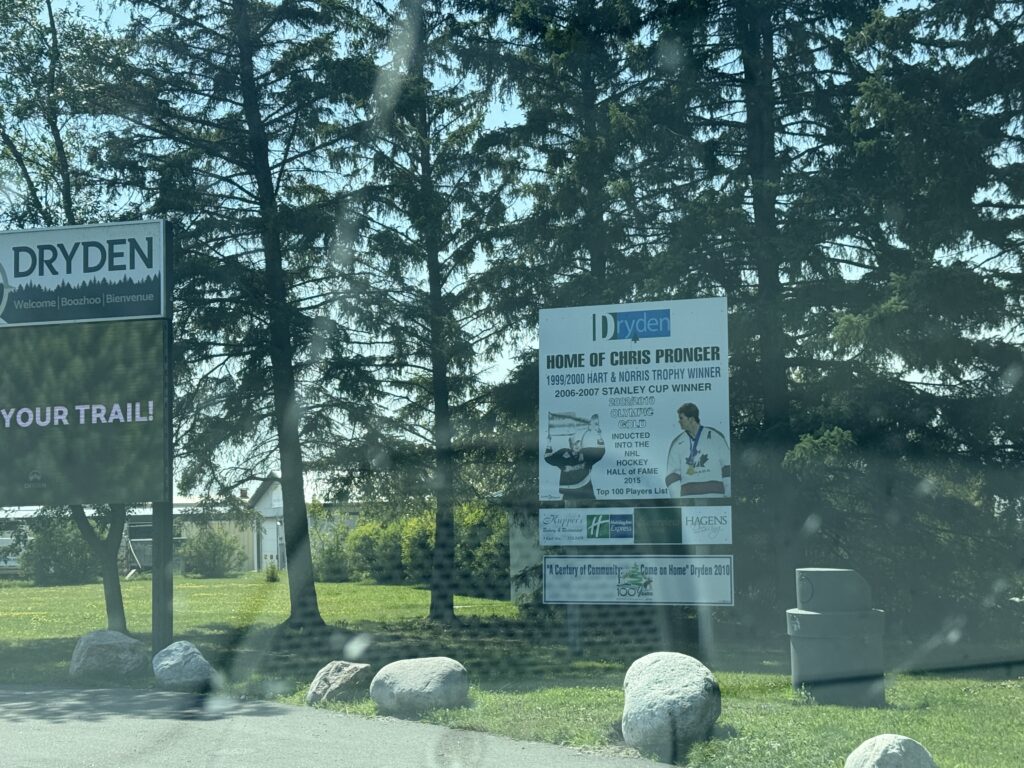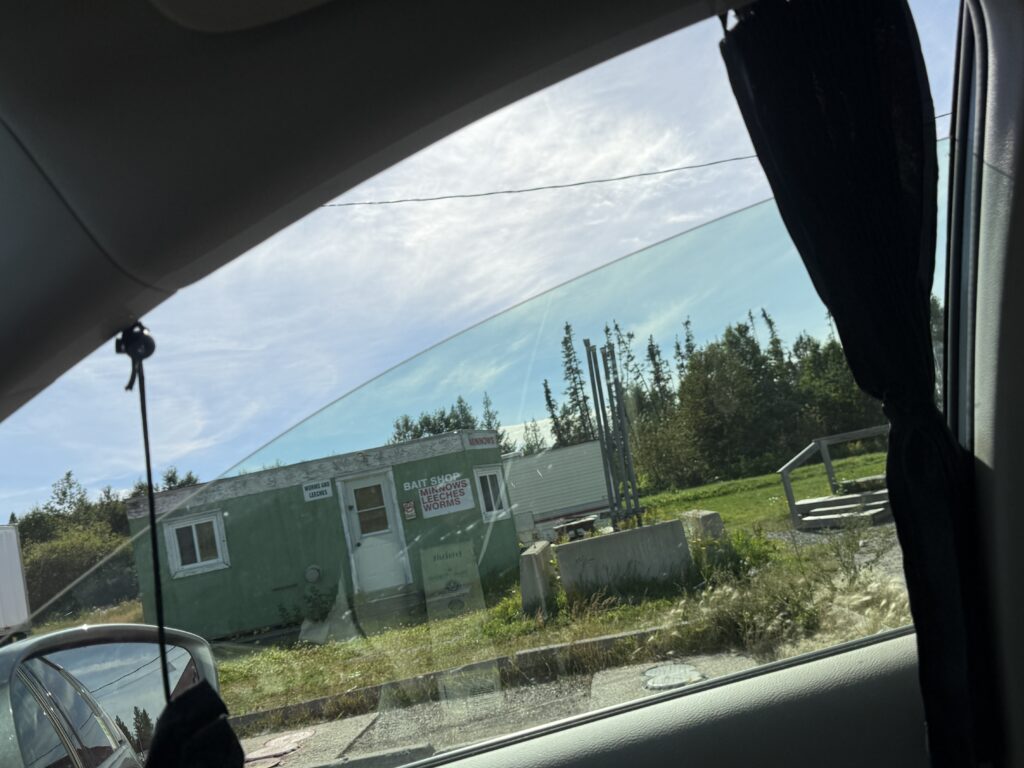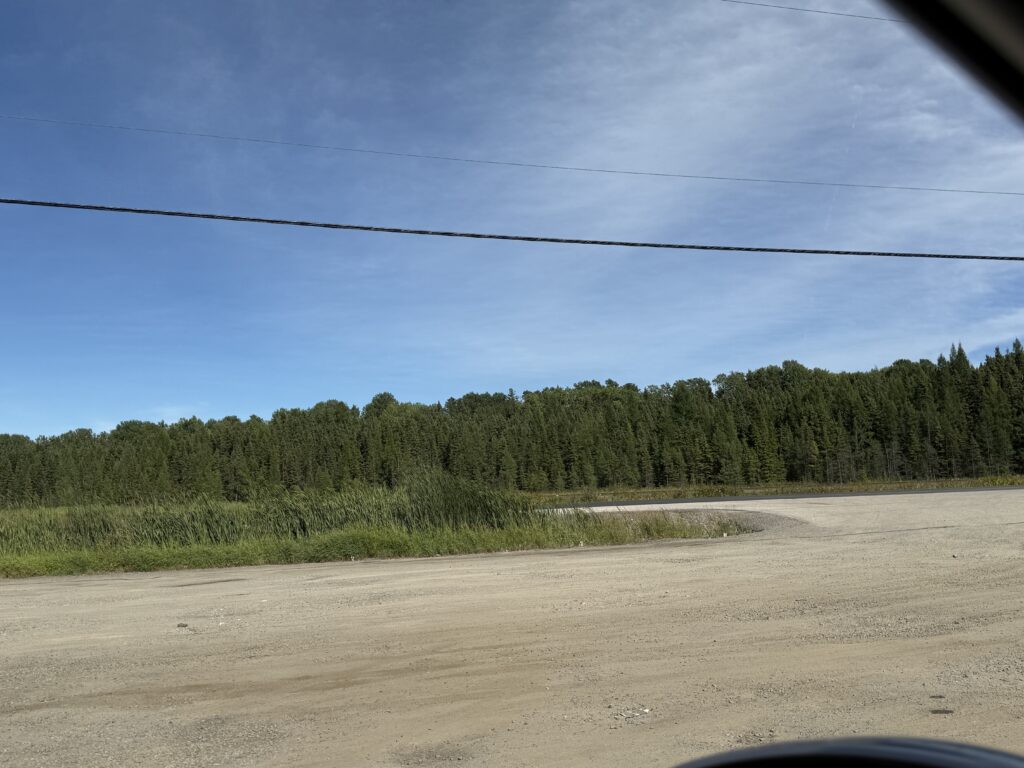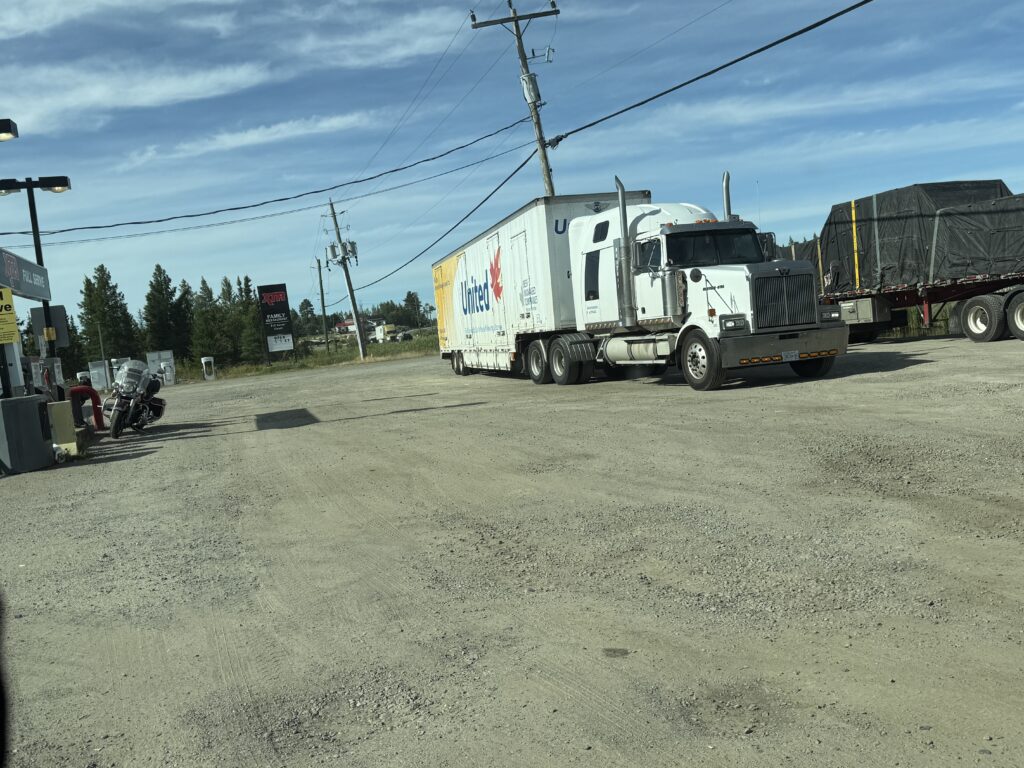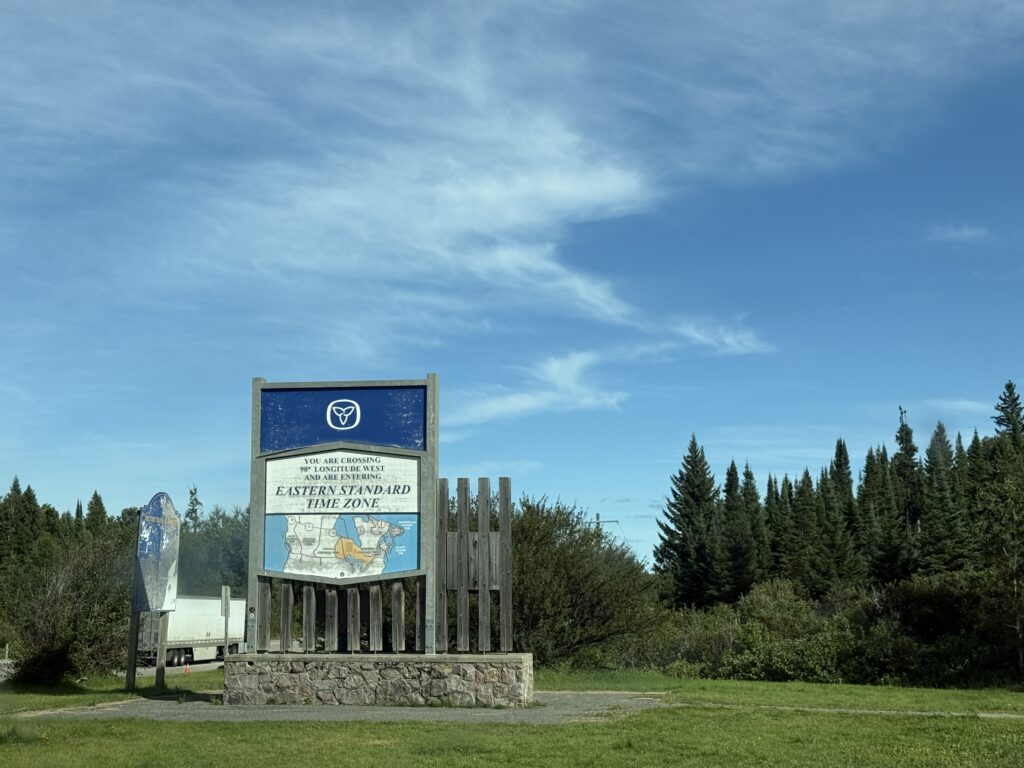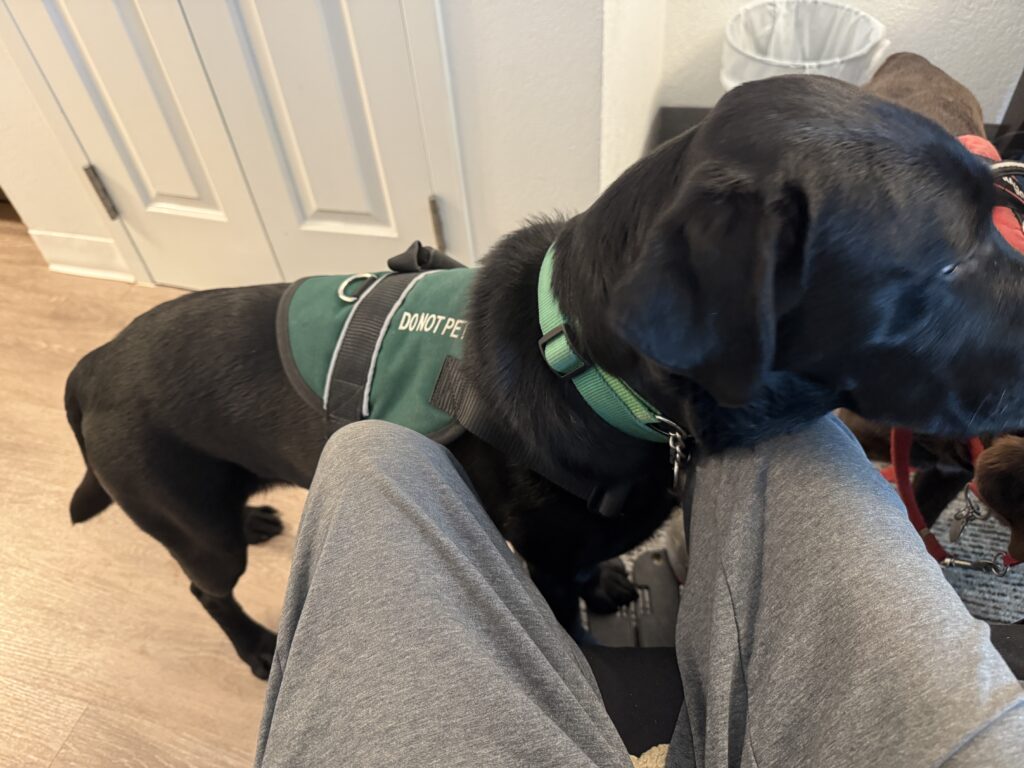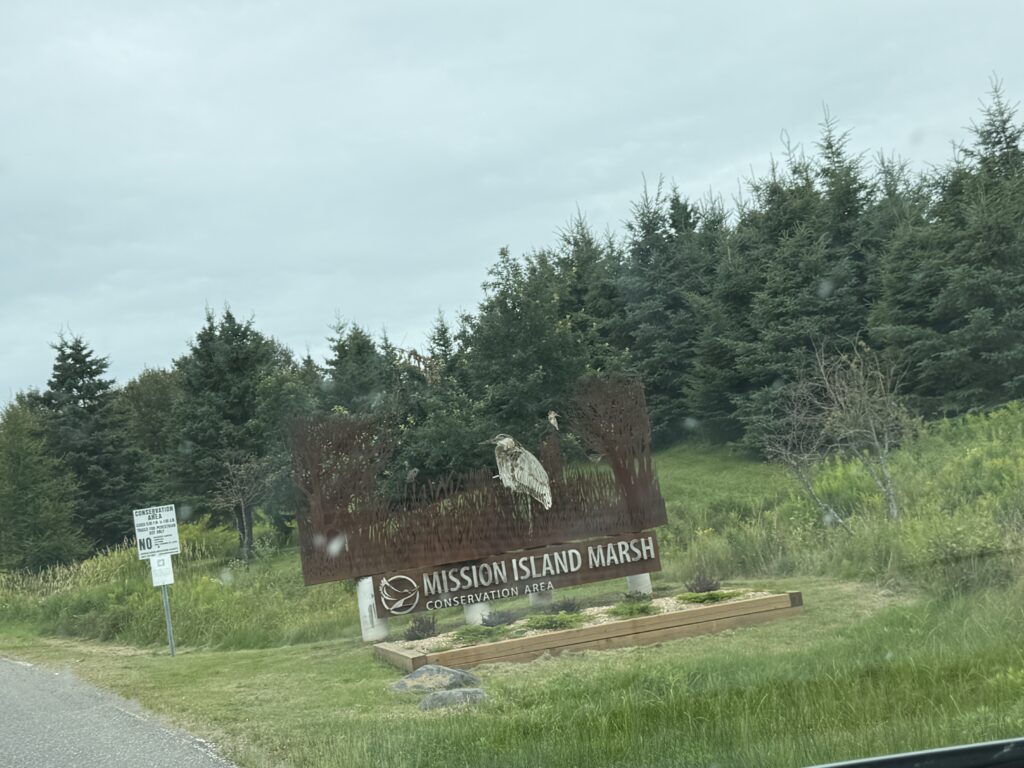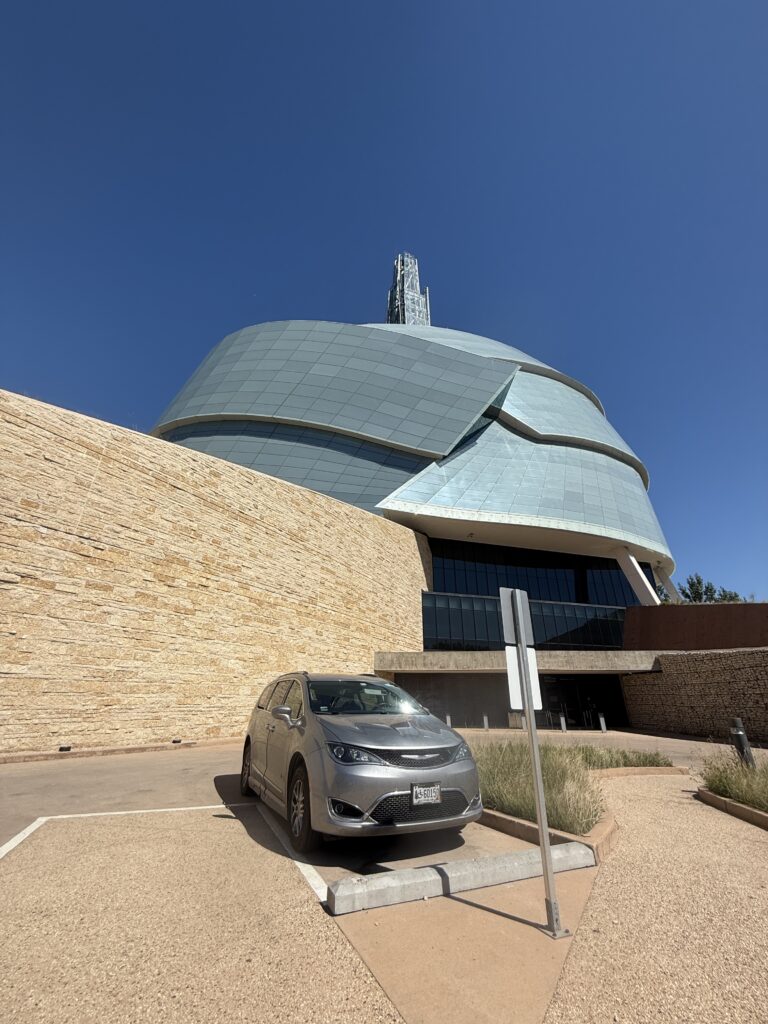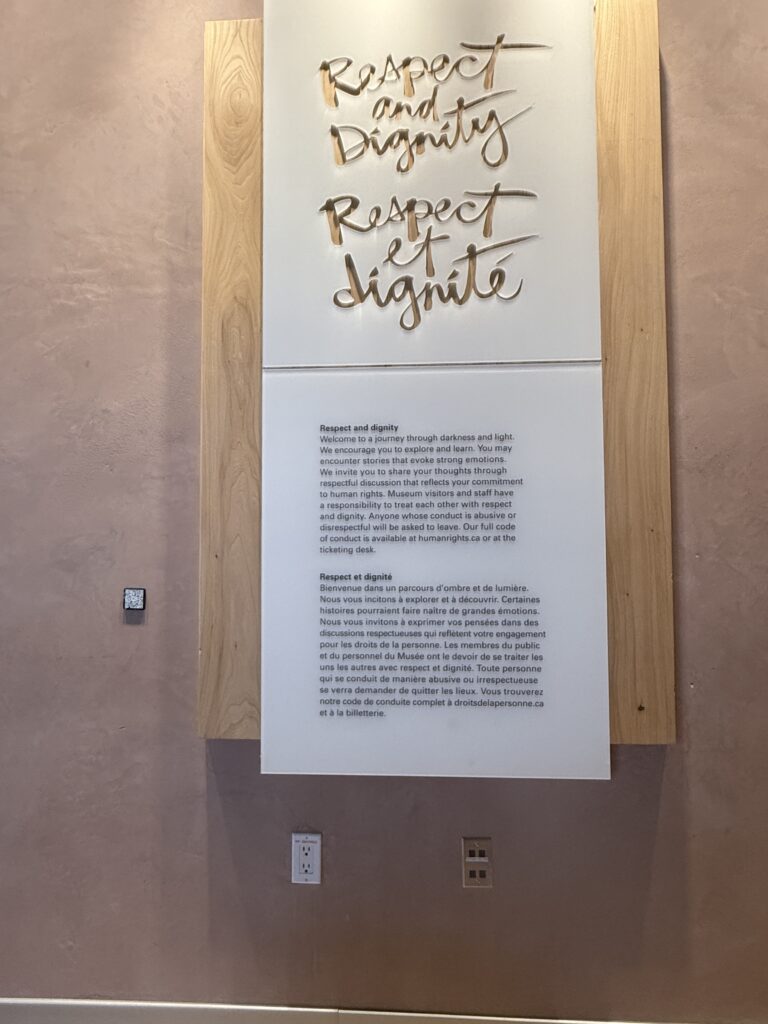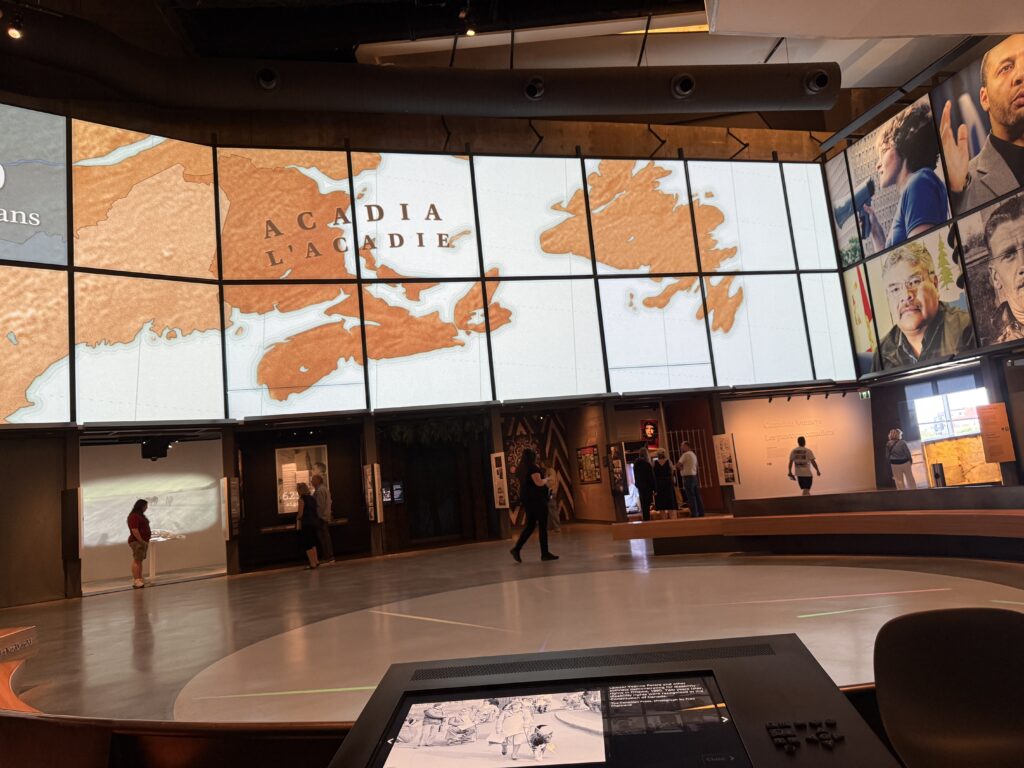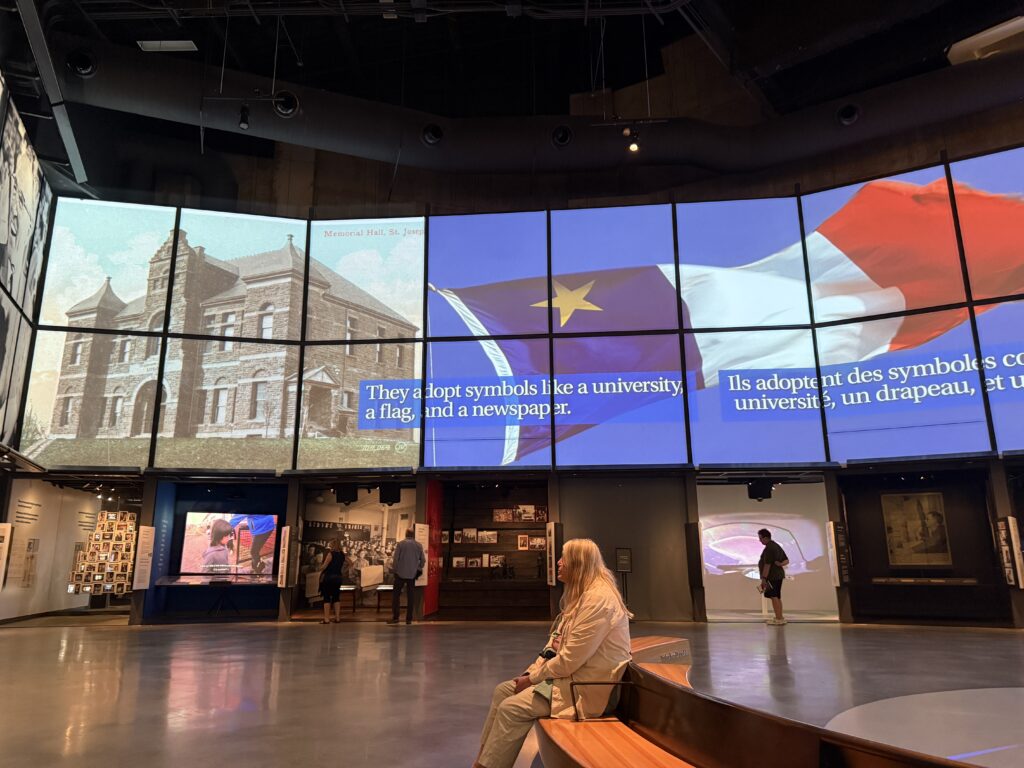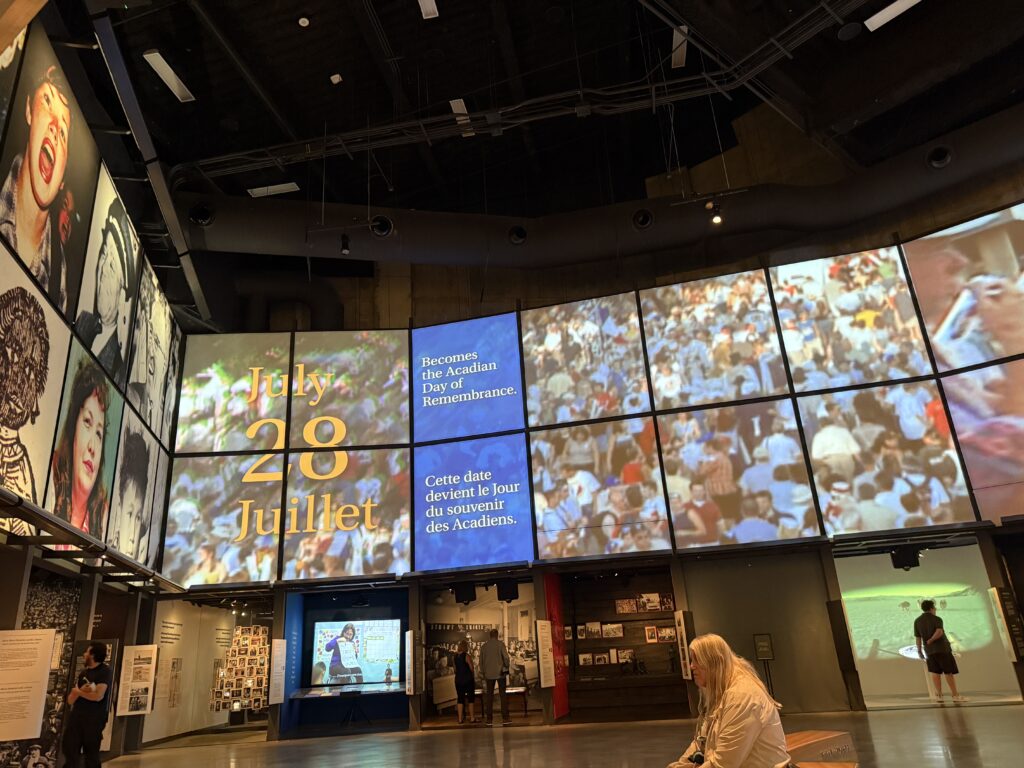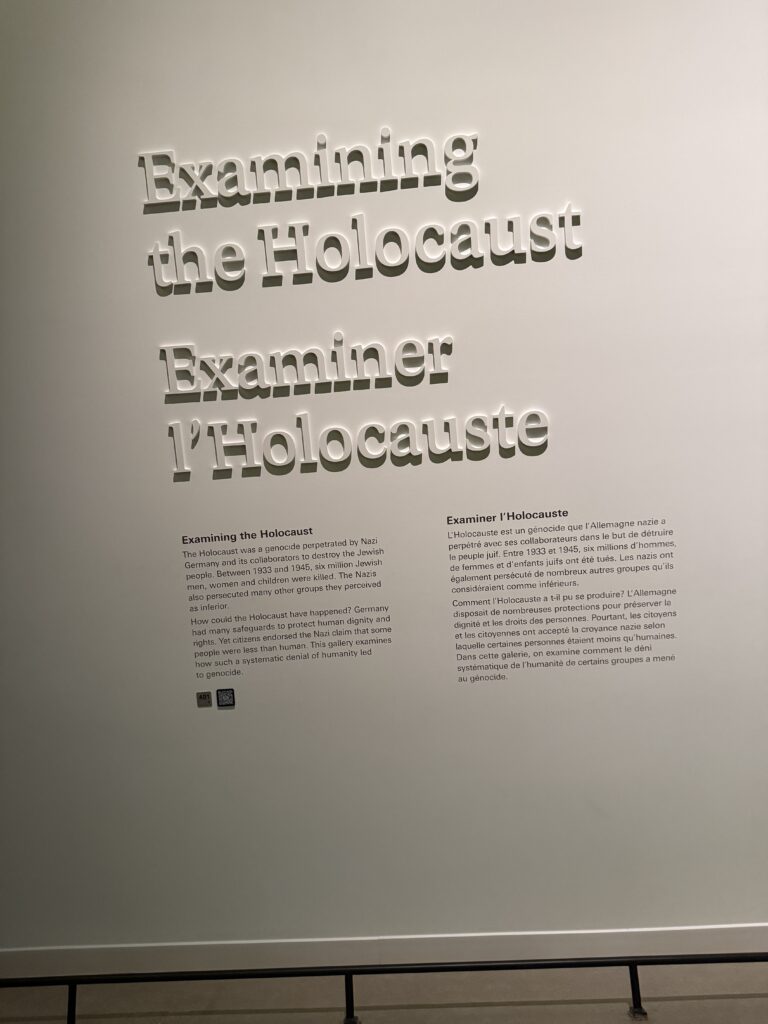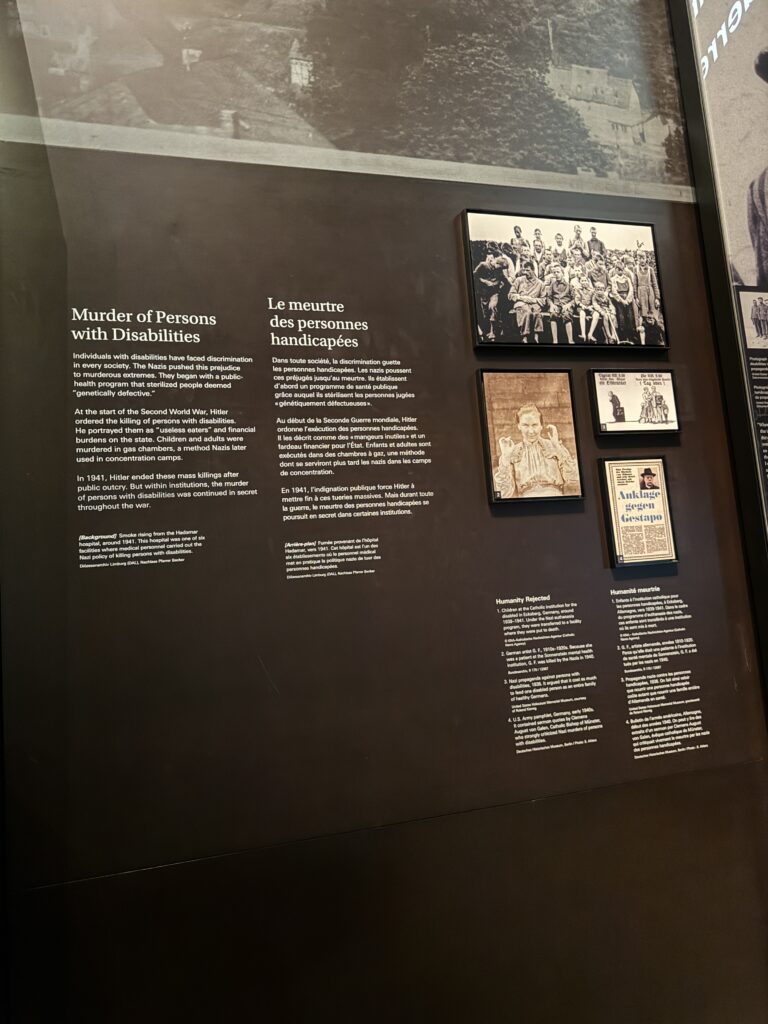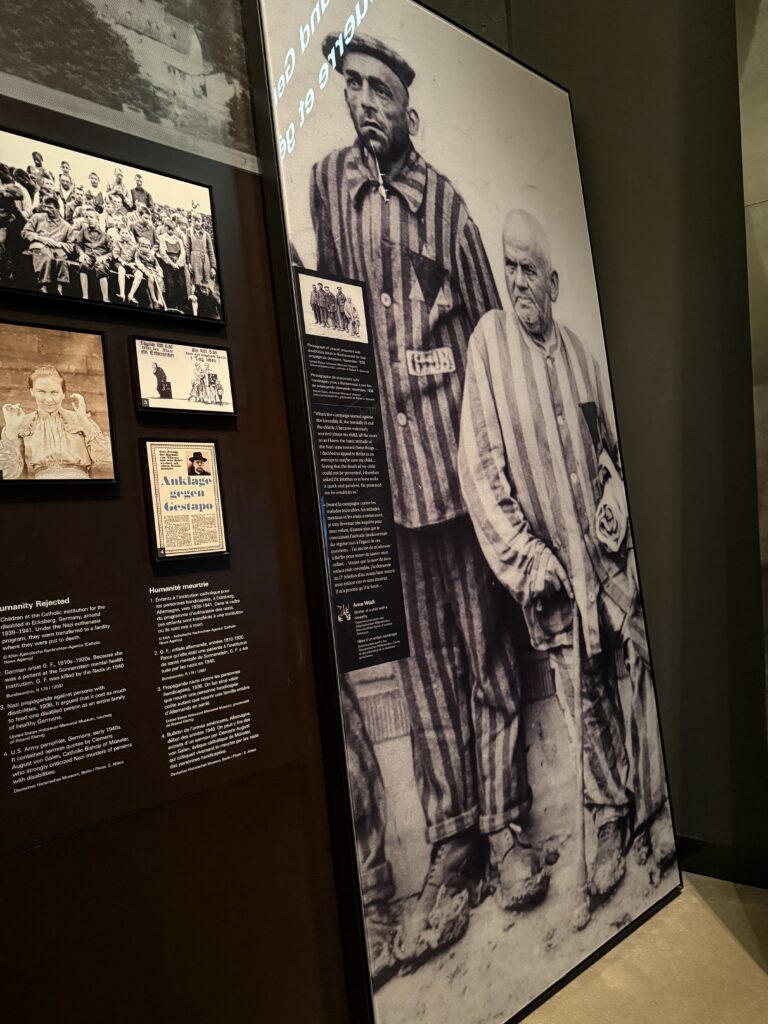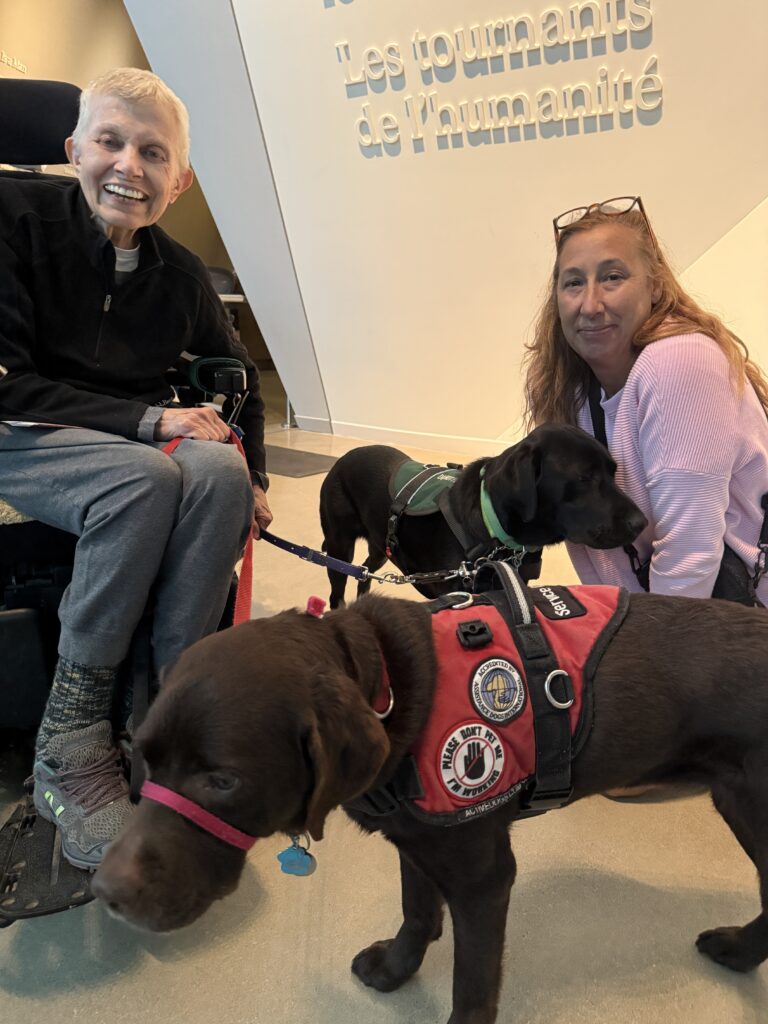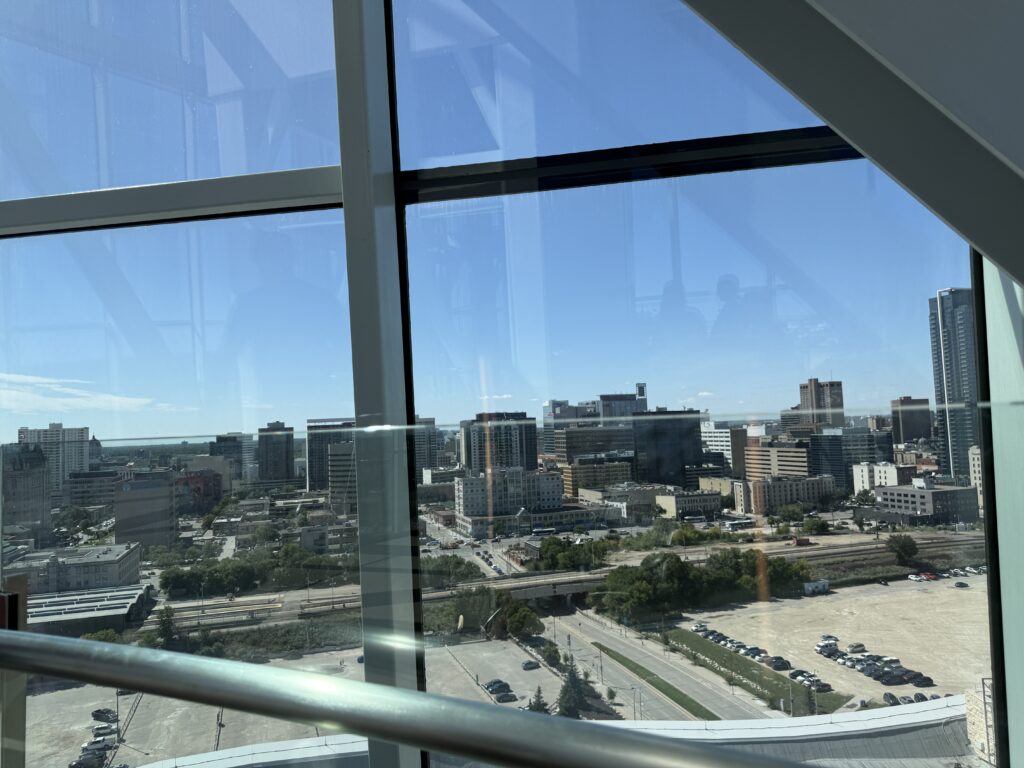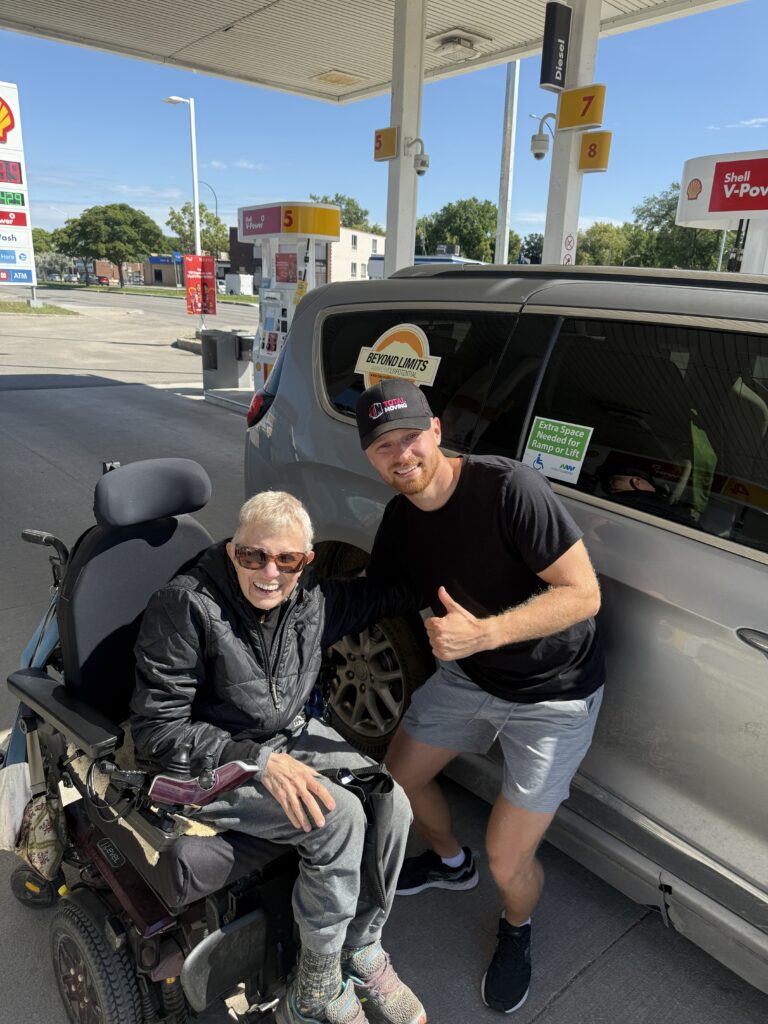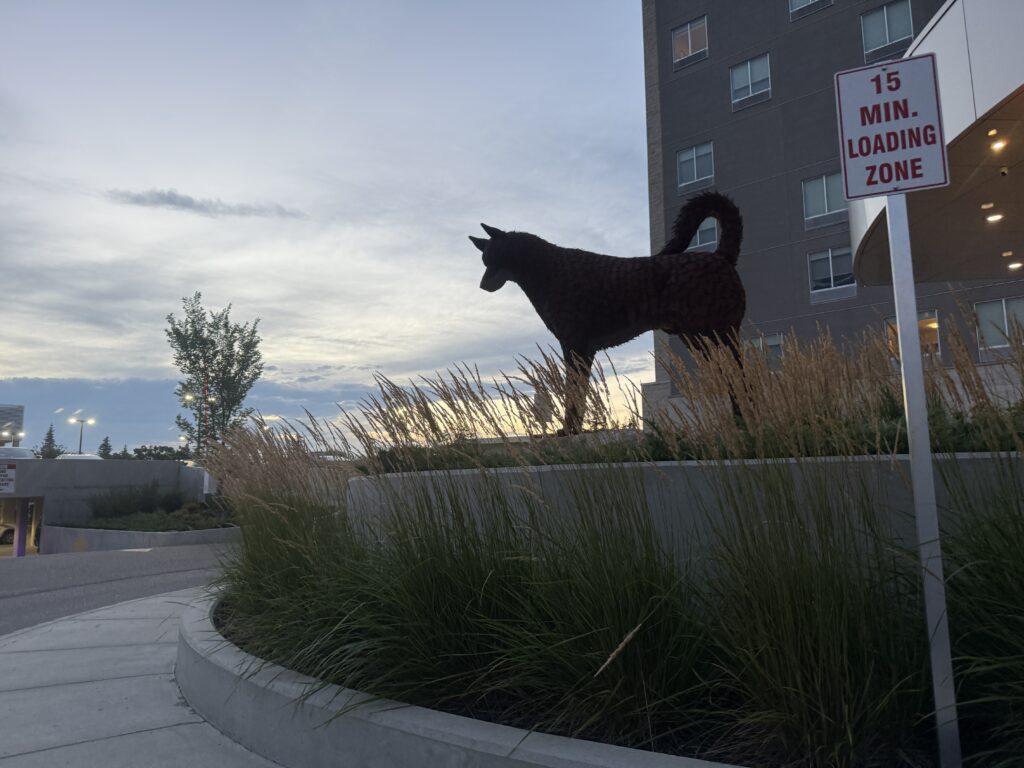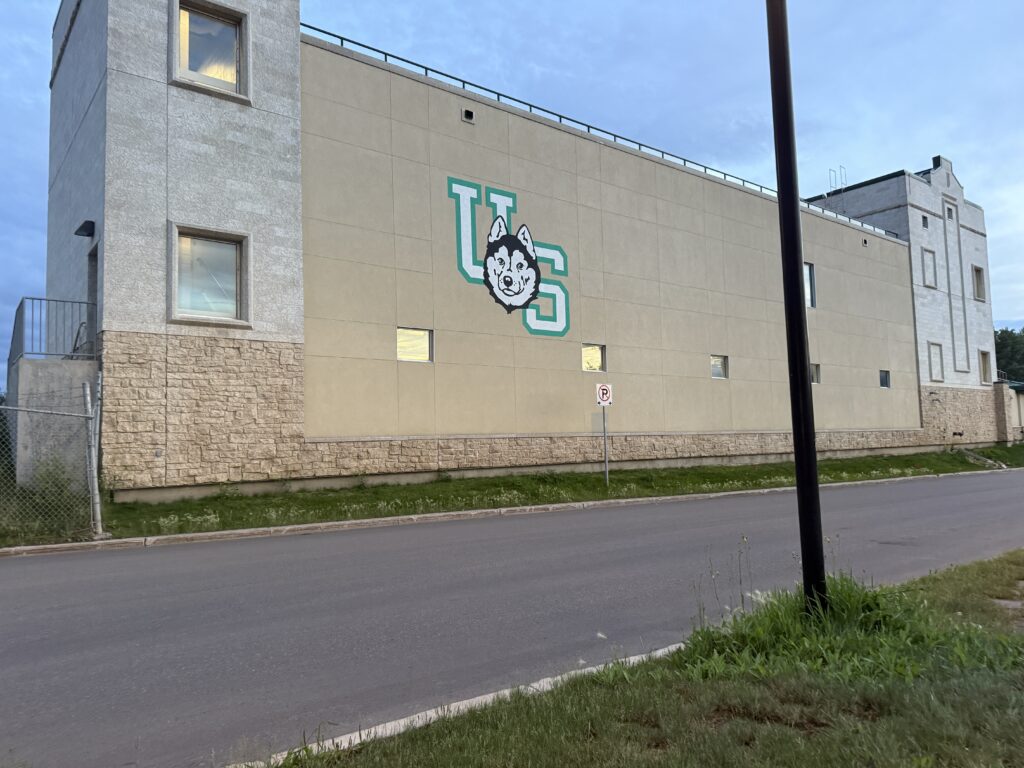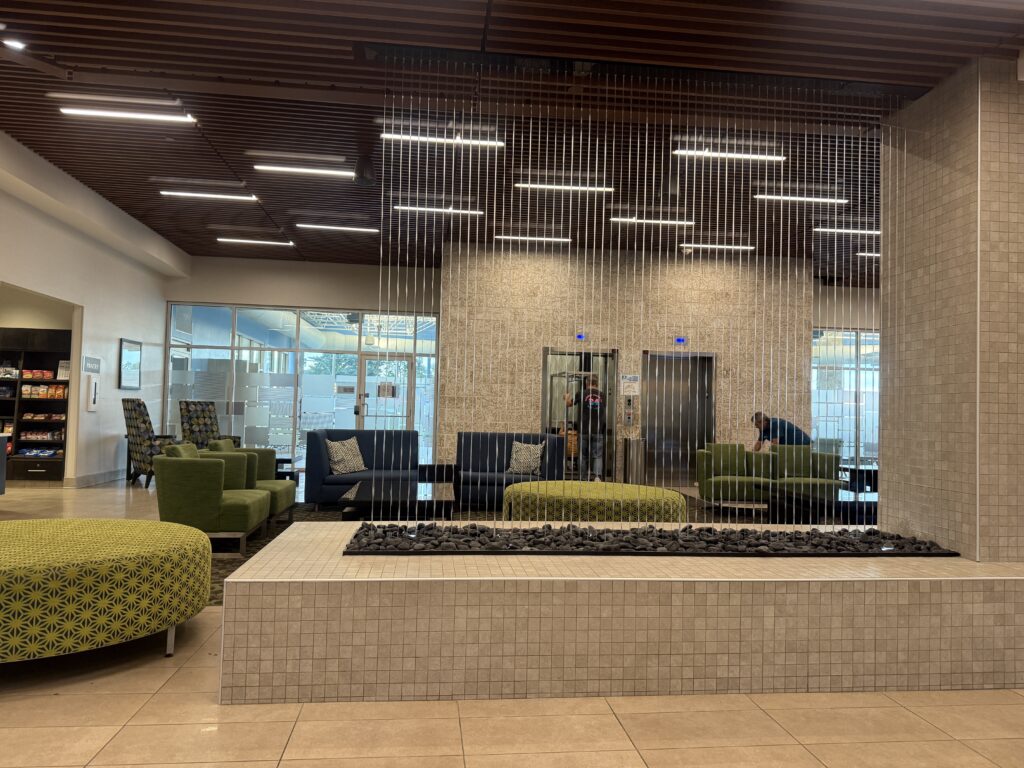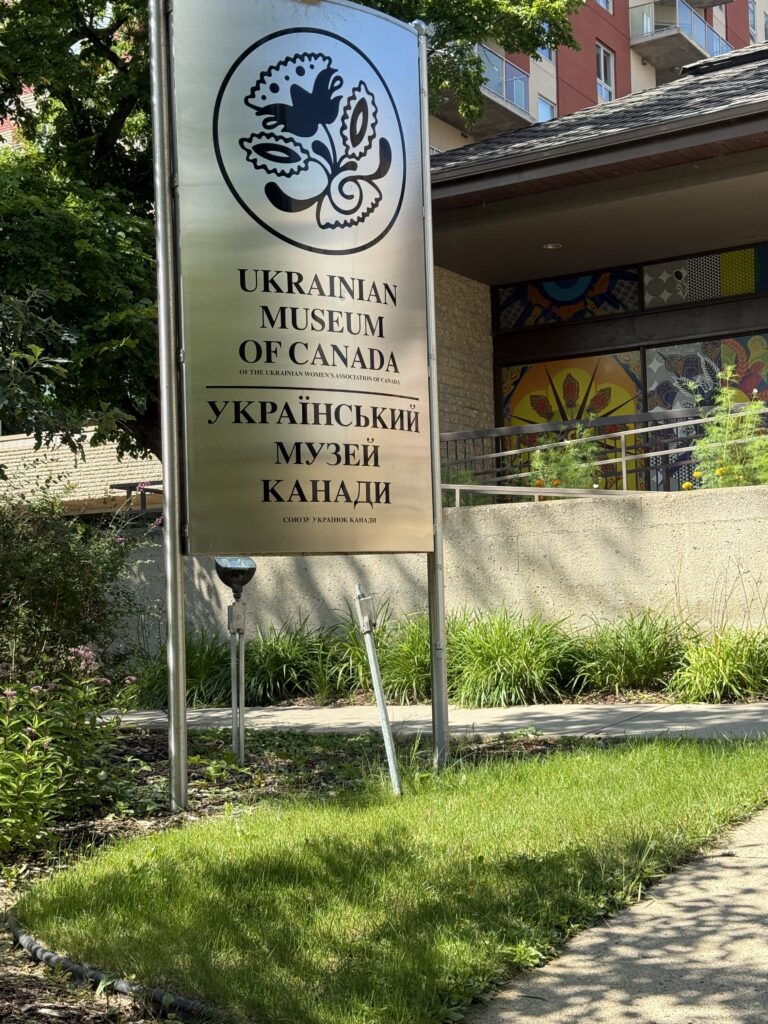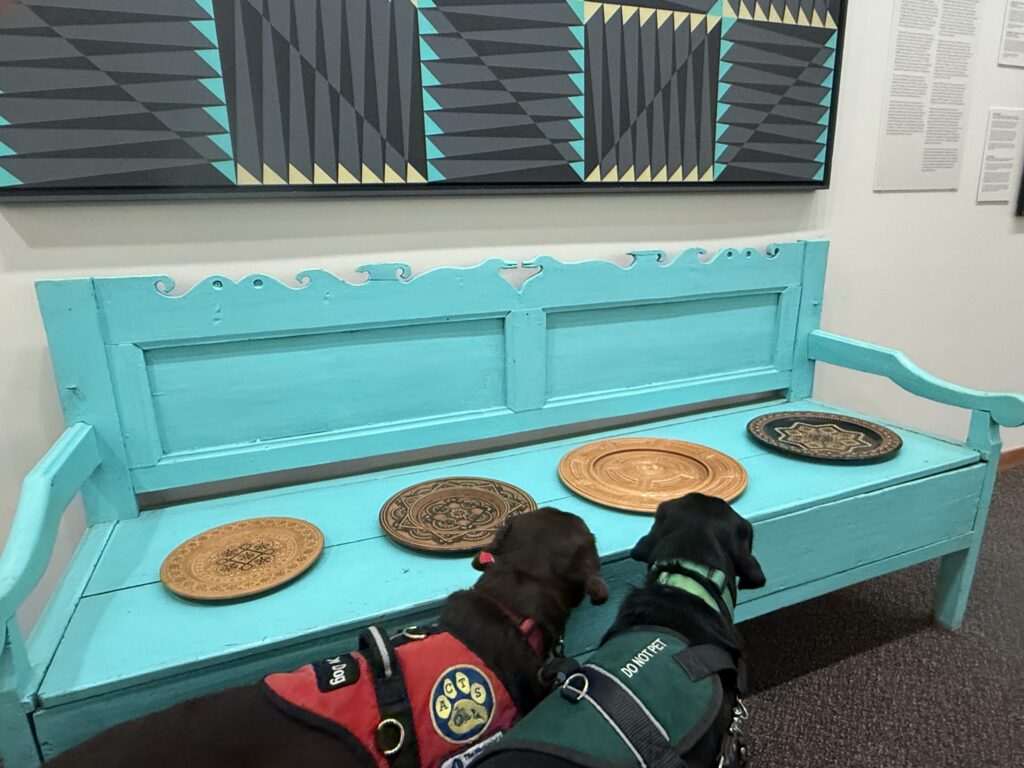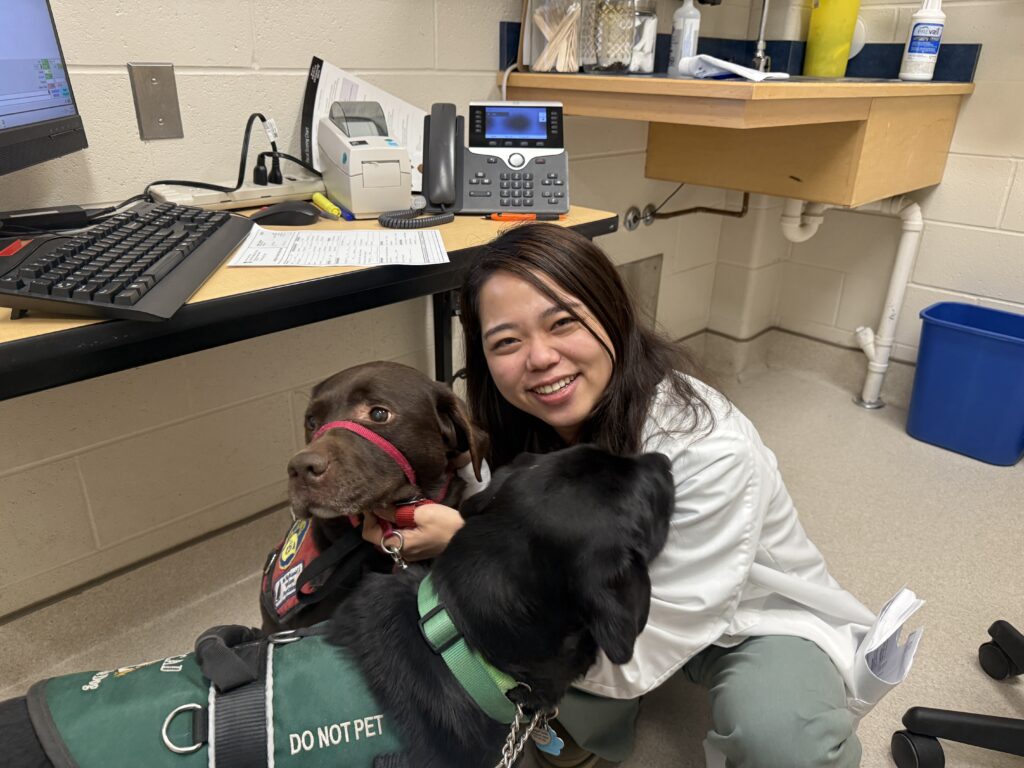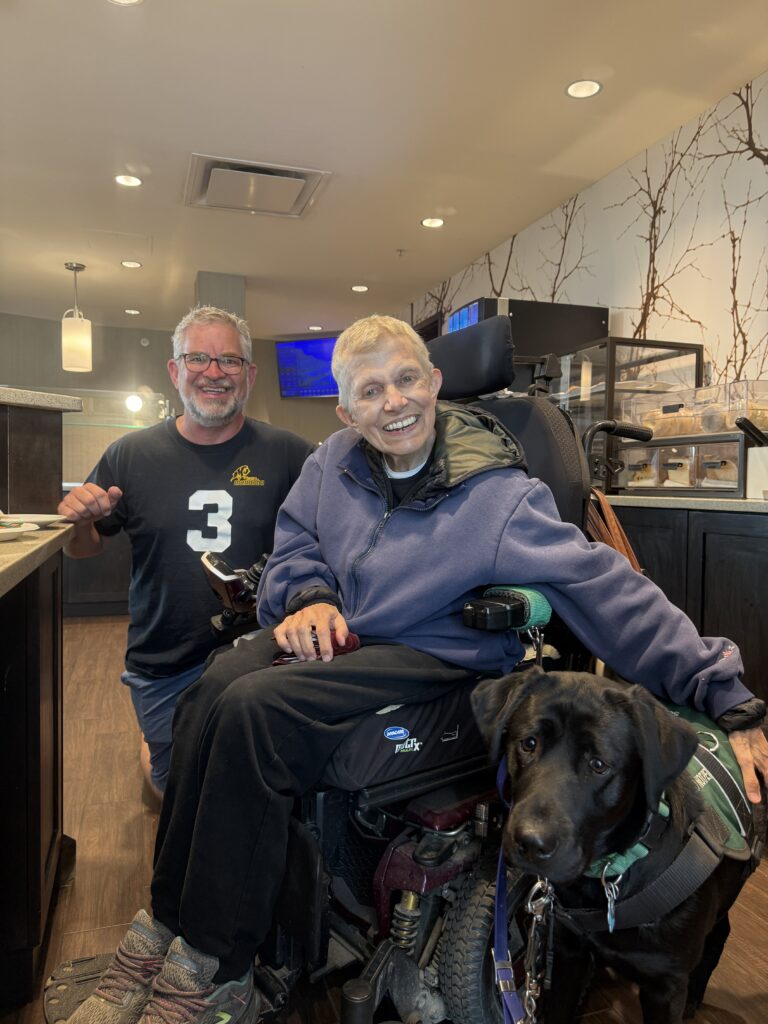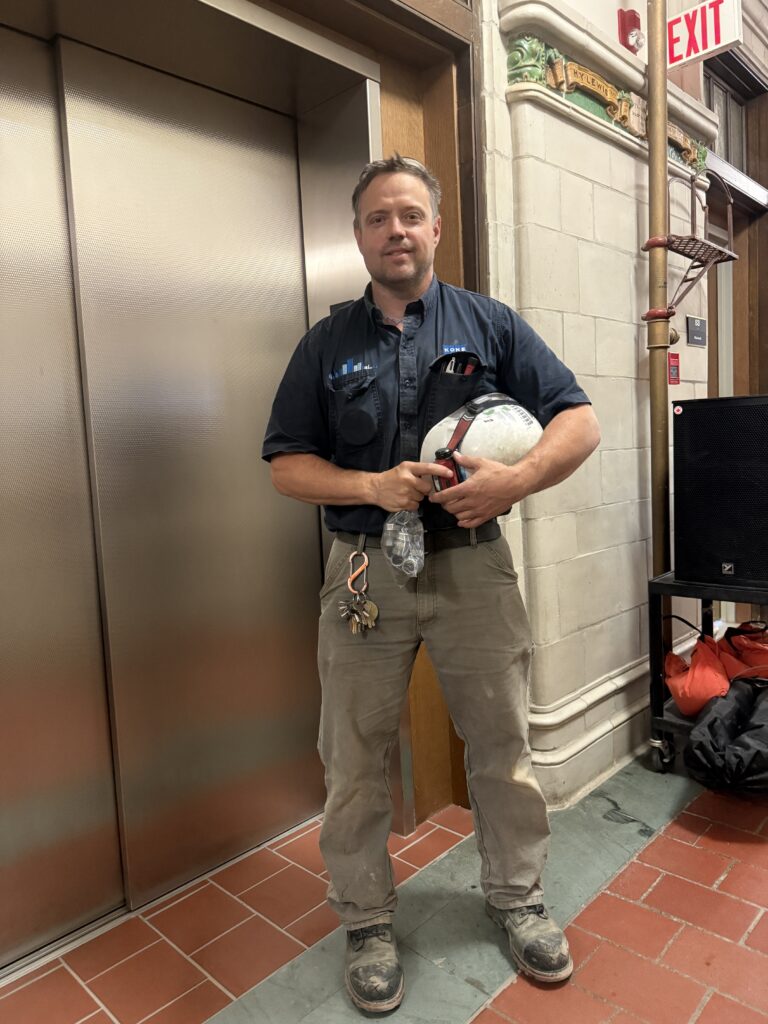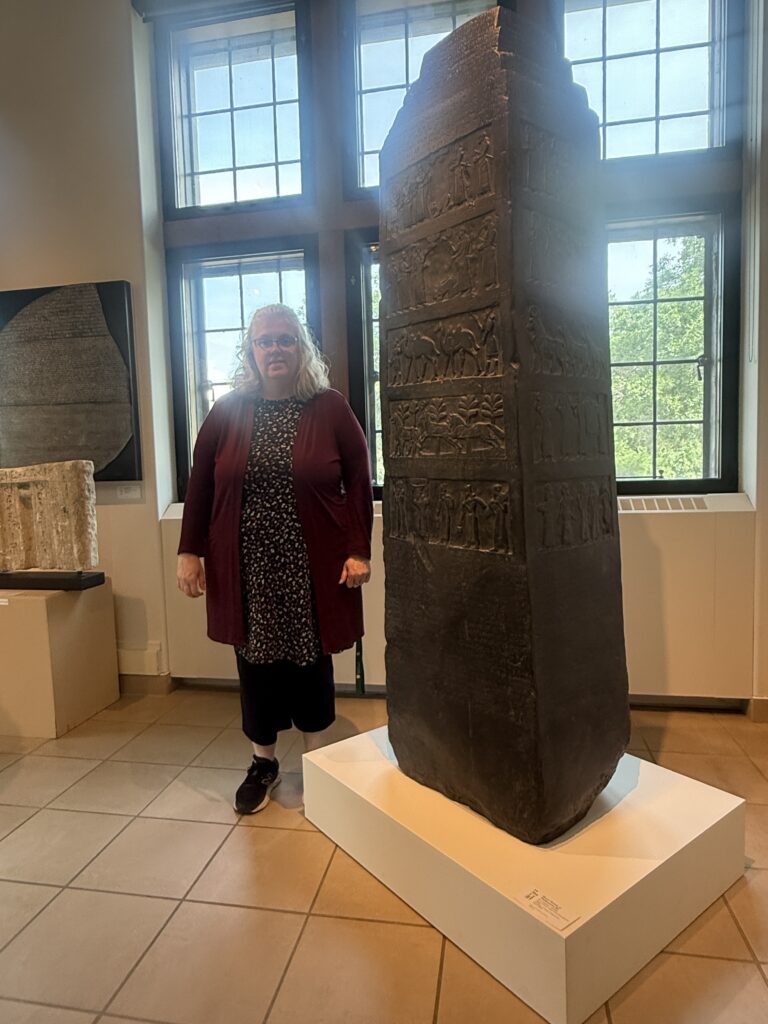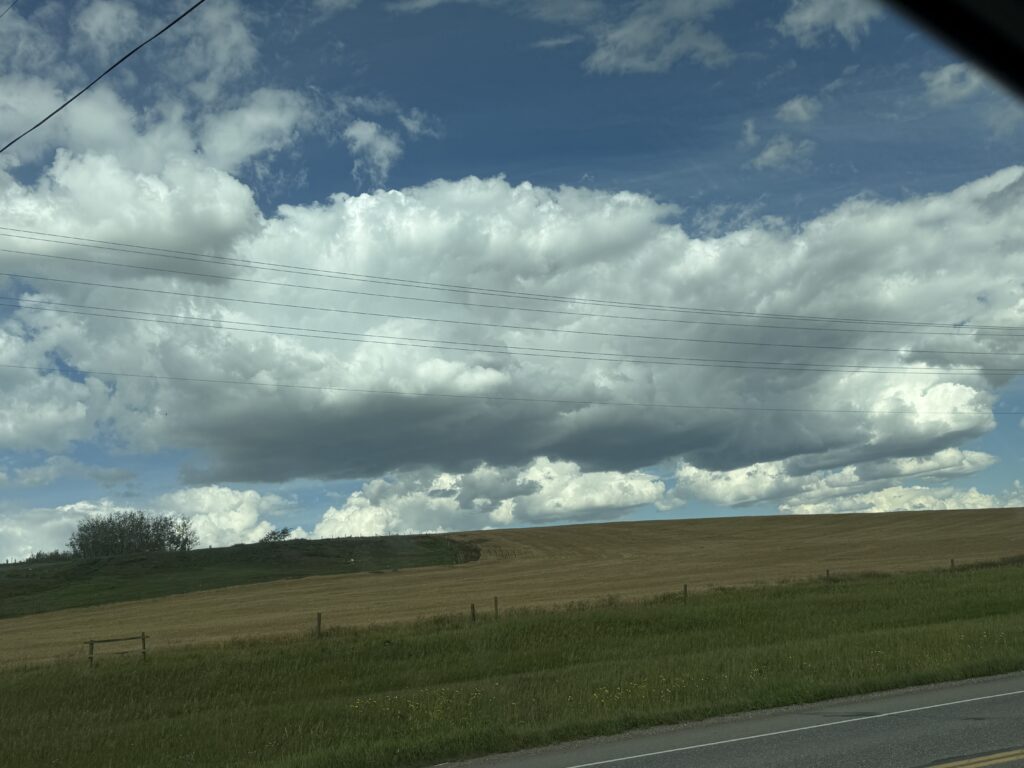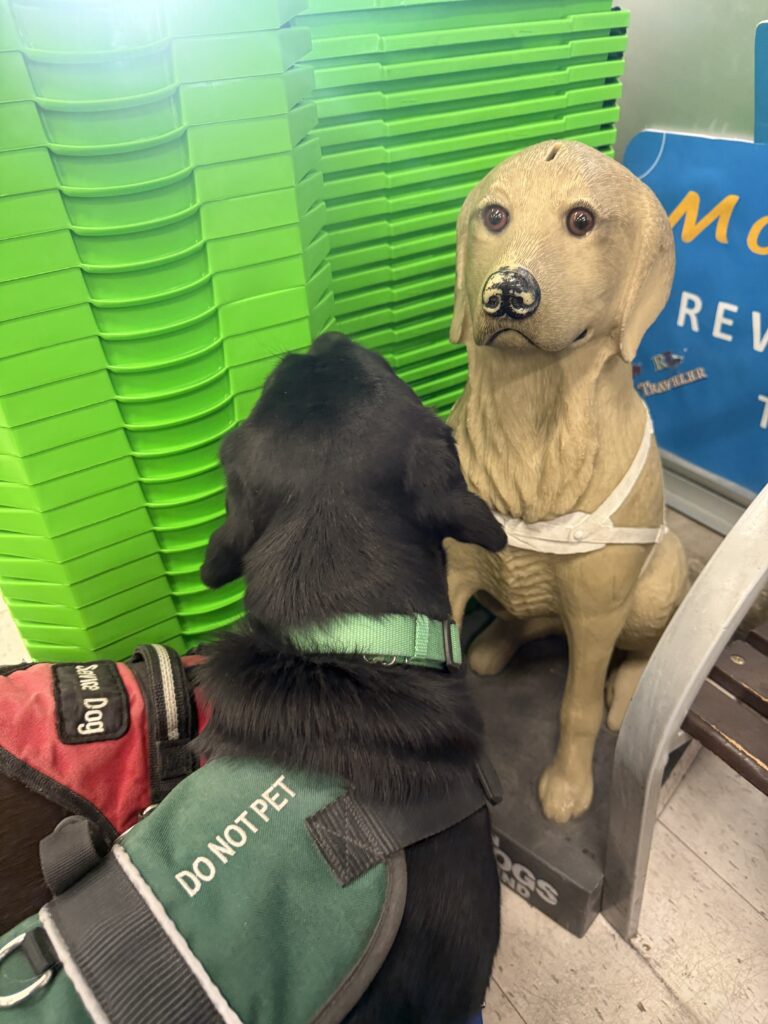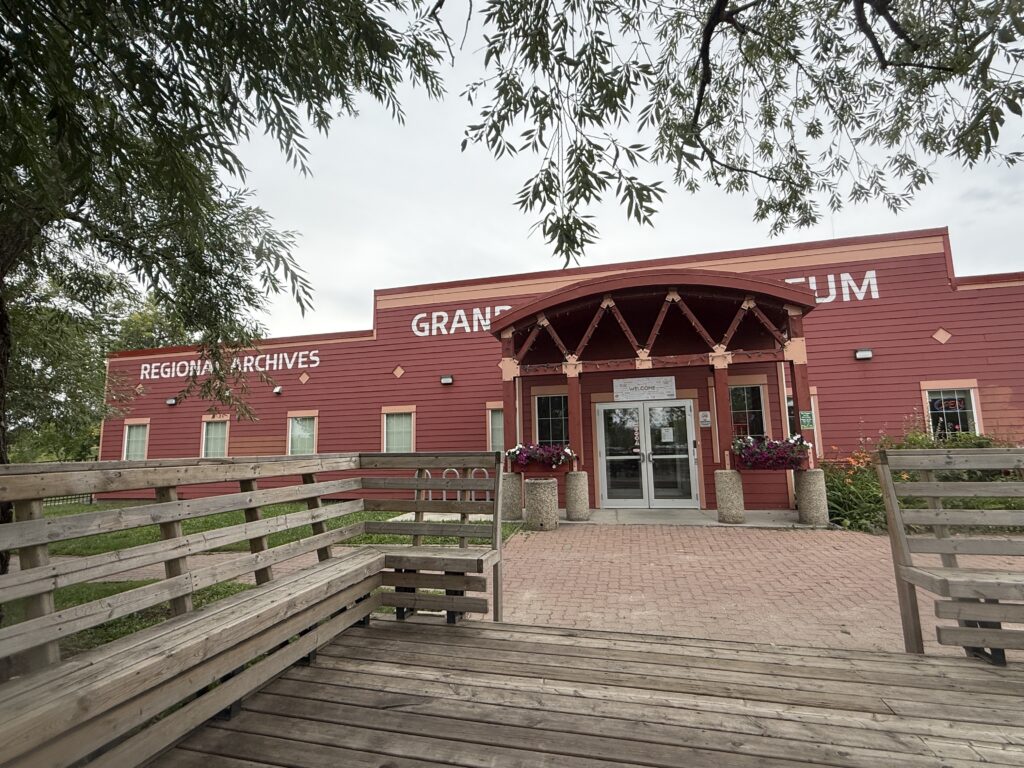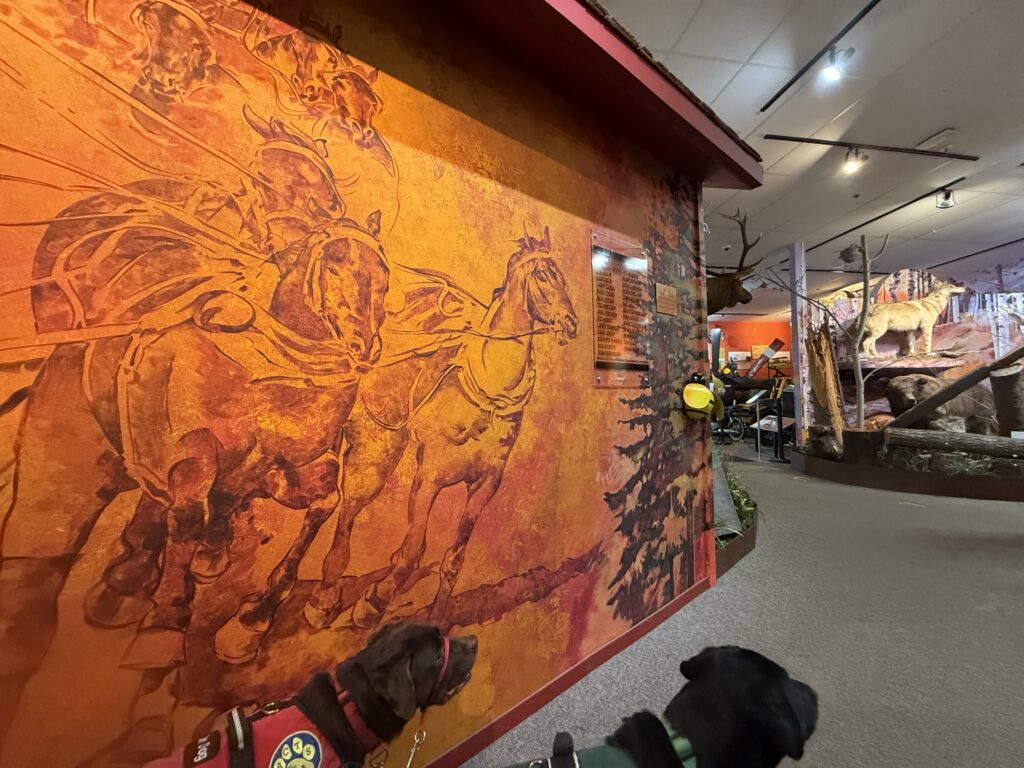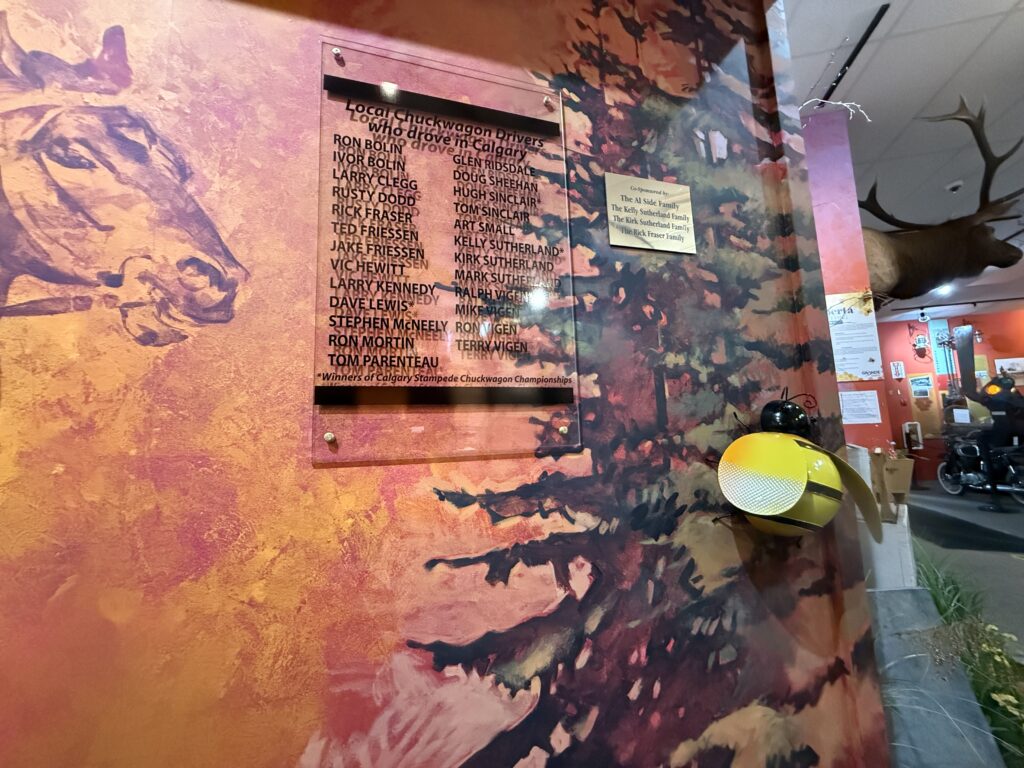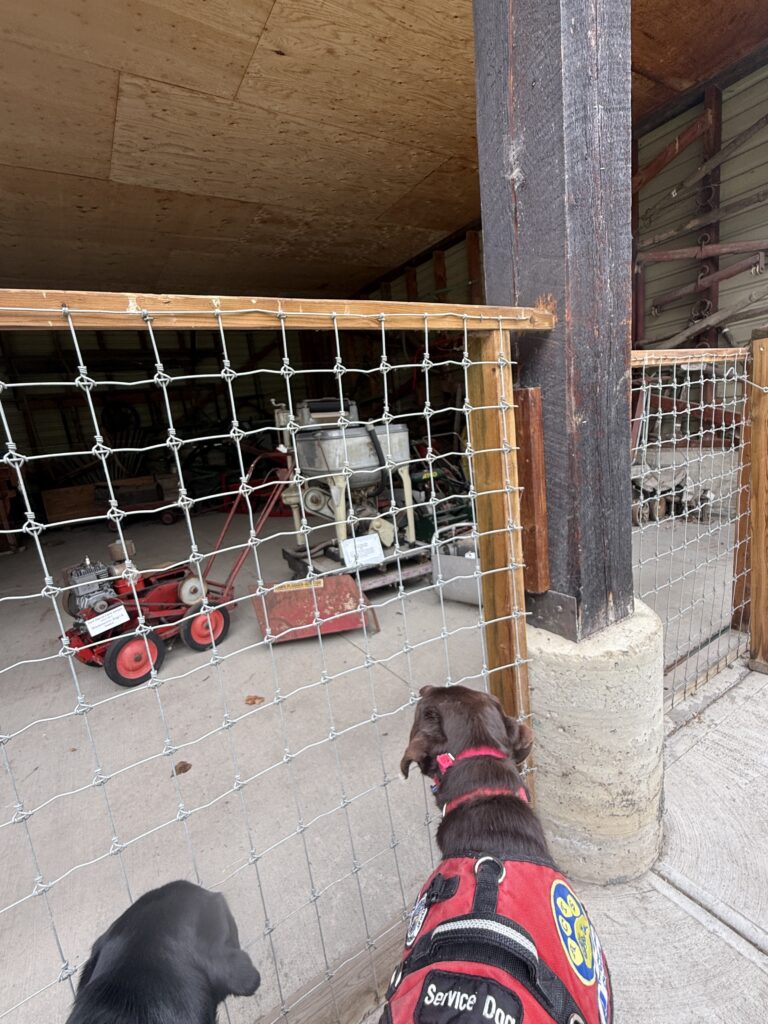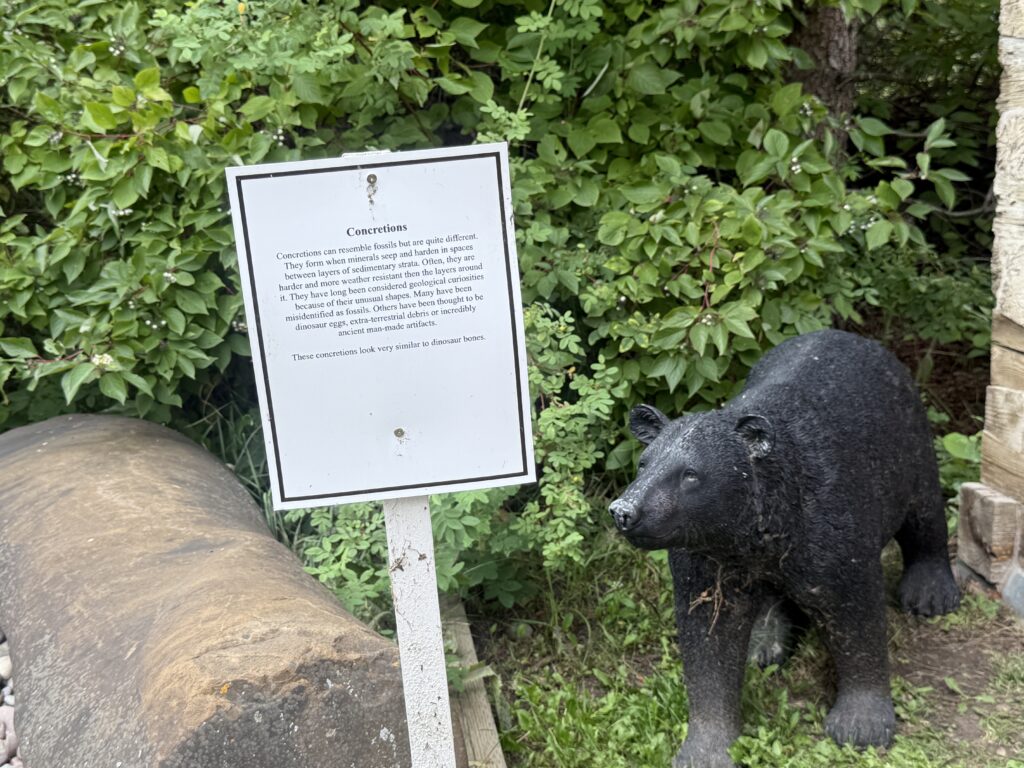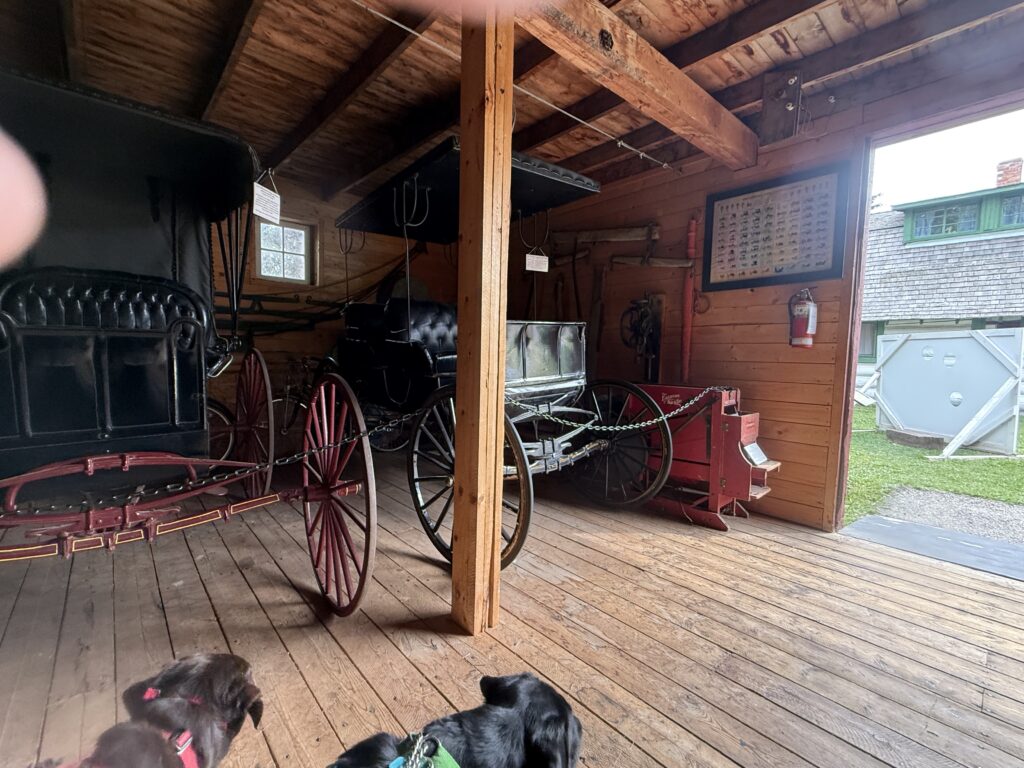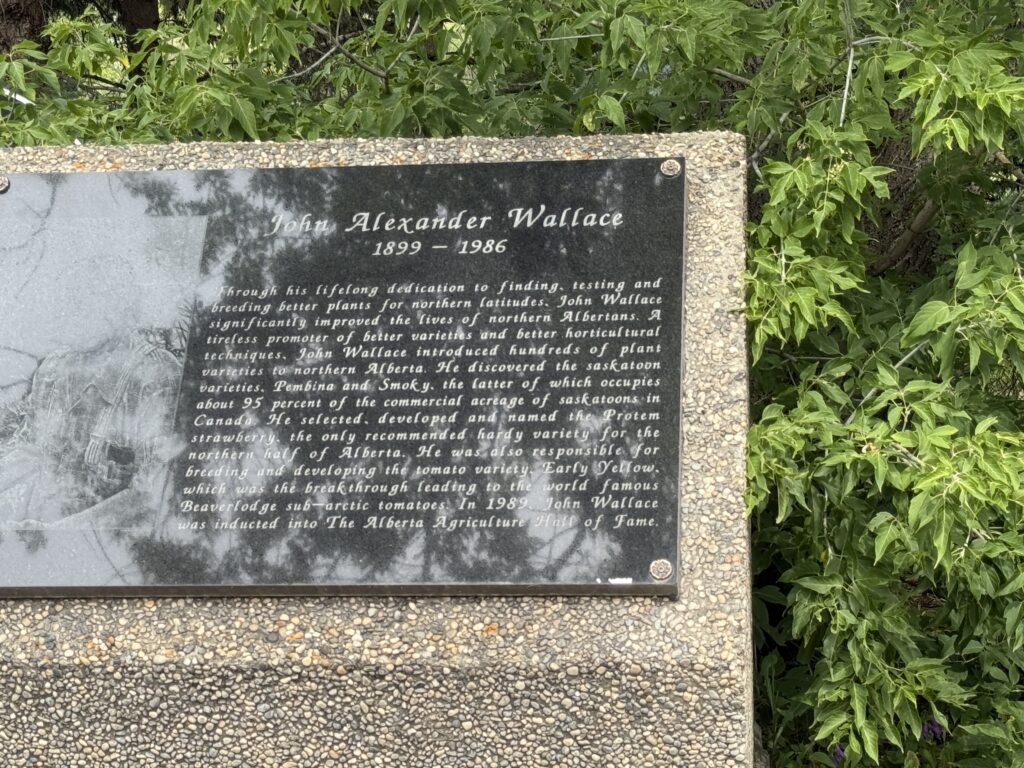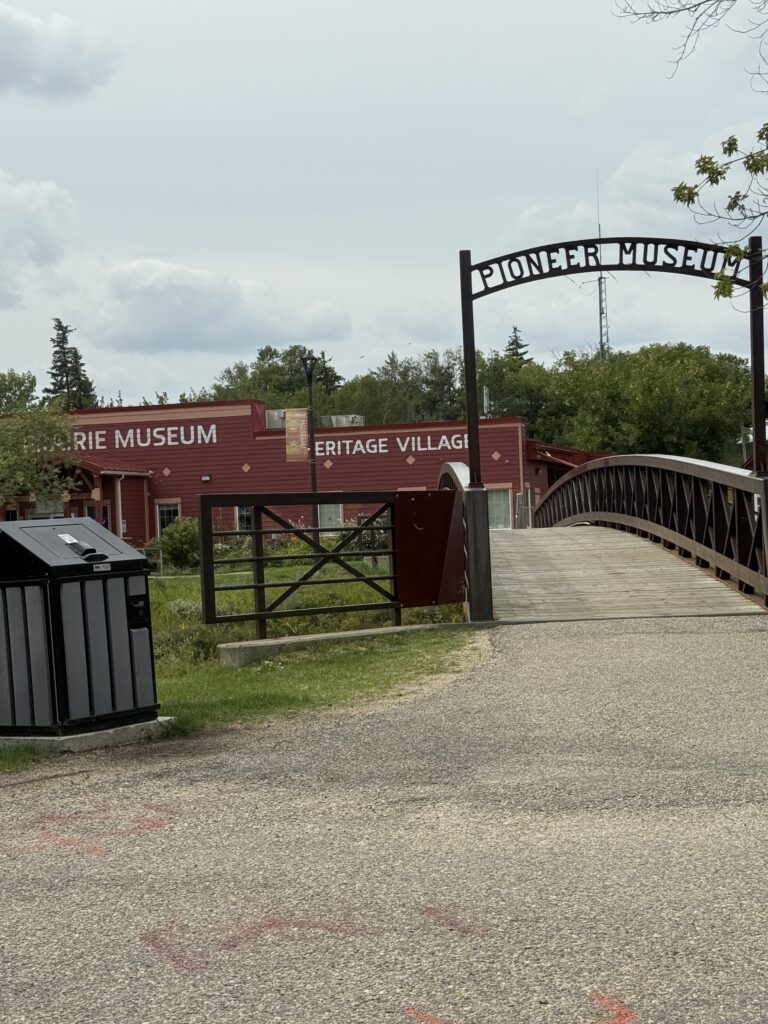Over the Edge 2025!
Here are some photos and a video from Dr. J’s most recent adventure. The Lowmans participated in Over the Edge, a fundraising event held in Worcester, Massachusetts. Thanks to so much generosity, the Lowmans raised over 2,500 dollars for Canines for Disabled Kids for them to do this event, which entailed Dr. J rappelling down the side of a tall building in downtown Worcester.
To view a video of Dr. J’s descent click below:
https://drive.google.com/file/d/1eYGasPhqblXchuunL5s9h8yWKzJlo8pa/view?usp=sharing

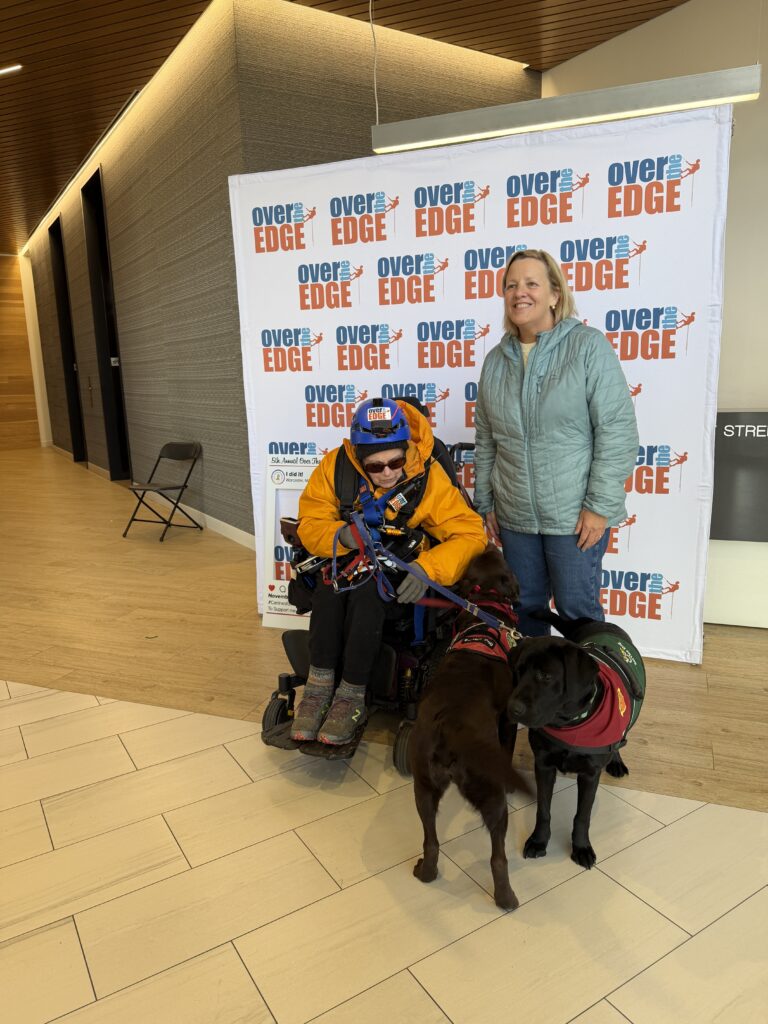
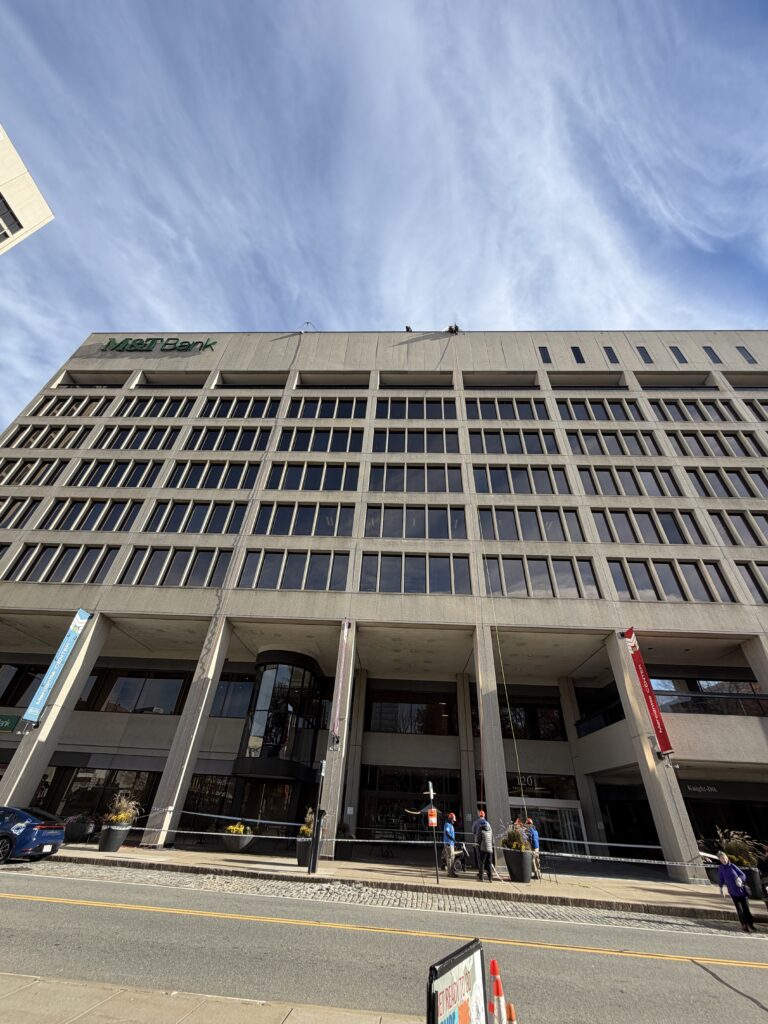
All Good Things Must Come to an End
(August 23)
Dear Folks,
This is where we will spend tonight. It gets excellent reviews and is said to be completely accessible.
More tomorrow.
Hugs and Wags.
The Lowman Family
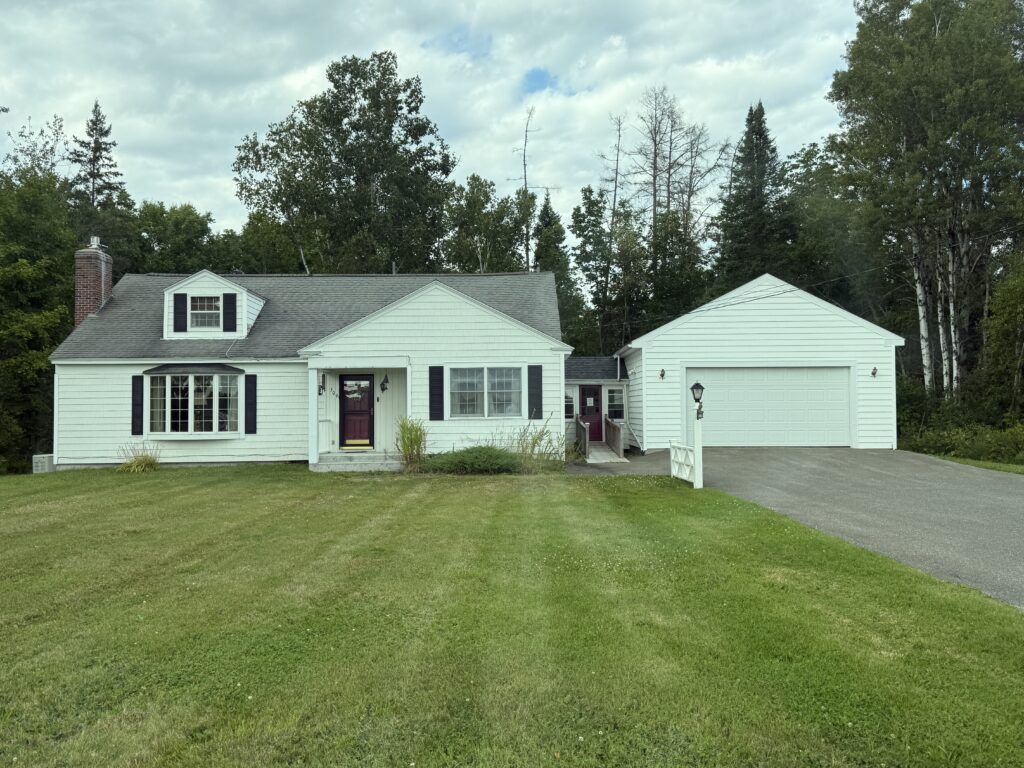
(August 24)
Dear Folks,
Well, our Journey consisted of 10,381 eventful, amazing, but–most significantly–SAFE miles.
What a thrill and privilege this trip has been. We have a lot to process and think about.
We give a shoutout to Google. As someone with the directional sense of a lemming, I thank her for making our Journey much easier. She showed the correct way most of the time. She can be a little sneaky, though.
On all our previous trips crossing back into the US from Canada, we have come through Van Buren. That’s what we wanted to do yesterday. We put in for directions for Drummondville to home on Friday to get an idea of time. She showed us coming home through Van Buren. We put in for directions yesterday, but did not check the directions. We got concerned when she had us get off the Route Transcanadienne and take secondary roads in Quebec and New Brunswick. We went through picturesque little villages on the water. And then we saw the sign for the Ft. Kent Bridge. Rats.
But it turned out for the best. We met John Anderson, the customs agent. He asked where we lived and we said Washburn. Then he asked where we had been in Canada. When we said the Arctic Ocean, his jaw dropped. He said that he has been doing that job for 18 years, and that was the first time anyone had said those words to him. He asked if there was a city at the Arctic: he wanted to learn more. We told him Tuktoyaktuk. That is hard to remember. SO we gave him a BEYOND LIMITS’ business card, so that he could follow what we had done.
Our favorite ride–even after all our travels–is coming down Route 11, a scenic byway–from Ft. Kent. We often do that to celebrate holidays. I did not think, after all our travel, that we would do that for Labor Day. So we did not: we did it yesterday, instead. We share some photos from the scenic byway.
When we got home, Mari was first to note it. She was beside herself. The Girls tore around the backyard. Then I did a lot of unloading.
This morning, Al and his son, Sheldon, came and helped us finish unloading and organizing.
The first part of the week will be spa times for Karma and Miracle.
Thank you so much, Folks, for your support, interest, and love. Having you as your network was a continual inspiration. We wish that you could have all joined us. But we felt your presence every step of the way. We have such an AMAAAAZINGGG network. We look forward to catching up with each of you individually over the next little while.
And please share about BEYOND LIMITS with others: beyondlimitsawaken.org. Ricky’s had been turning our texts into blogs. You can find on the website under Top of the World Journey. We would love to share more about BEYOND LIMITS with others.
Thanks again, folks. We couldn’t have done this without your help.
Take care. Be well.
The Lowman Family
Château d’If (Kind of)
(August 21)
Dear Folks,
We are delighted to report that we are in Drummondville. It took us three hours to get through Montreal. We would hate to have to do that every day.
More soon.
Hugs and Wags.
The Lowman Family
(August 22)
Dear Folks,
Here’s a post from our last full day on the road.
The Quality Suites in Drummondville looks like an old chateau from the outside. This is the fourth time that we have stayed here.
When we got here last night, there had been a mix-up about our room. We have always stayed in the wheelchair accessible suite on the first floor: the Akito room. We made our reservation in January and specified this room. They also have a similar room on the second floor. Someone had put a note on our reservation that said EITHER the first or second floor. We explained that that was not us: we would never willingly choose a room for which we would need to use an elevator: more hassle to get dogs in, no use in case of fire, etc.
The first floor room was taken. So we had to go with the second floor. The manager, Susanne, pictured, said that they felt terrible. So they would move us downstairs today when the first floor room was available. And we happened to be outside in the back when Susanne came out and saw us preparing to bring in our other load. She thought that we were traveling with another person, because I had talked about “we.” She was amazed that it was the Lowman family. So she got a luggage cart (something I can never use) and brought the rest of our things upstairs. She saw the BEYOND LIMITS logo on Miracle, so we got a chance to tell her about our organization and give her a card.
Today, after the people checked out of the first floor room, they cleaned it and then came with a luggage cart to help us move downstairs. We also had an opportunity to suggest to Susanne how they could make the wheelchair accessible rooms more accessible. These are things that a non-wheelchair user might not realize: a lower peephole and lock on the room door; a lower rod in the closet; the microwave on the counter and not in a high alcove; a lower hook on the bathroom door. Susanne “got it” right away. We talked about a few longer term fixes for the bathroom. We explained the need to be able to back next to a toilet. And the shelf in the shower with shampoo and conditioner is too high.
We feel very encouraged by the reception that these suggestions HOT and hope that some can be implemented.
Tomorrow we go home. It has been a wonderful trip–lots to ponder and write about. And lots to do–unpack, laundry, work on Karma, two spa days for Miracle–one at Percy’s and one at Mobility Works.
And LOTS of people to thank for their constant support, care, and concern–including all of you.
Hugs and Wags.
The Lowman Family
PS: And the only place on this whole trip that has given the Girls their own beds! Of course at night, they tuck against Mummy. But otherwise, these comfy beds sure beat a hard floor. 😇
Hugs and Wags.
The Lowman Family
PPS: Susanne also has two Labs–a black and a chocolate.
Another Helping Angel
(August 19)
Dear Folks,
Greetings from Kirkland Lake. On our way here, we made a quick stop at Beardmore. We thought that you might enjoy the giant snowman statue.
The day started out very foggy and rainy. The fog diminished. The rain was intermittent all day.
It was a fine drive, but long.
When we got here and tried to unload, Karma’s wheels got tangled in our broom and Mari’s leash. Thankfully, David was outside, talking with his son. He came to our rescue, taking the broom apart and stashing it and untangling the leash. The Girls gave him kisses of gratitude. David also lugged in our suitcase.
David is very mechanical. He redoes houses (for fun, we think). He started out as an electrician and now is a crane technician. He travels all over northern Ontario, visiting mines and servicing their cranes. He says that’s what keeps a population in northern Ontario–mining–and logging. He lives in Sudbury and has a vacation home in Nova Scotia.
David grew up on Cape Cod. His mother is from the Berkshires. He has relatives in Maine, but could not say where. He has been in Canada for at least 34 years. So…another helping angel.
We went for a walk by the Microtel. That is where we found the Miners’ Memorial. It is such an impressive 3-D sculpture. We hope that you can read the legend. What an extraordinary way to make a living.
Hugs and wags for tonight.
The Lowman Family.
August 20
Dear Folks,
An early text today. We are preparing for our last big push tomorrow.
Today we went to Kinross Pond. We had found it when we went through in 2022. It’s an absolute gem: and there is a paved path that goes all along its circumference. (We made sure to stay on the path.).
Kirkland Lake has a population of about 10,000. In case you were wondering what kind of mining they do here–gold. Along the paved path there are plaques to famous KL-ers. We were intrigued to learn that the character played by Charles Bronson in “The Great Escape” was modeled on the Tunnel King of Kirkland Lake. During World War II, a group of miners from Ontario, Quebec, and Manitoba served in a special tunneling corps. That included several from Kirkland Lake. And several of their famous sons and daughters are known globally.
The pond is beautiful and peaceful. People go to walk and ponder. Some feed the pigeons and chipmunks. This is bear country, so we are back to the metal bear-résistant containers. We saw a large quantity of bear scat.
People here–as throughout the northern climes–seem to really treasure the chance to be outside. And you see people across the age spectrum –from very young to very old. The human spirit finds a way, not just to survive, but to thrive.
Tomorrow night we should be in Drummondville. Getting there should be an adventure. 😇
Hugs and Wags.
The Lowman Family
An Extended Thank You
(August 18)
Dear Folks,
Here is another text. We wanted to give a few shout outs to folks.
The last two legs of our trip are pretty long. Some people have asked why. In this part of ON, it is beautiful and rural. There aren’t many settlements with lodging after this, much less wheelchair accessible lodging. That is why our next stop will be Kirkland Lake. We stayed there three years ago. It is a lovely town. When we called the Microtel the last time to reserve their wheelchair accessible room, they asked which one. They have eight. We were surprised. They said that they take accessibility seriously.
And why Drummondville, Québec ? It is on the far side of Montreal. We want to get through there.
So…Paula, we will be doing a lot of singing and car dancing. Thank you for that wonderful gift.
We send a huge thank you to Ricky Goupille. He is BEYOND LIMITS’ media person. He has been turning our texts into blogs that he puts on the BEYOND LIMITS website. Ricky, you have been getting readers. You are helping BEYOND LIMITS so much.
Before we left home, our good friend Pam reminded us that our organization isn’t called “BEYOND LIMITS” for us to sit home and stare at the walls. We hear your voice frequently, Pam, cheering us on.
Jill, our writing coach: you said that this trip should be a chapter of our book. We think this could fill several chapters–maybe even a book of its own.
Kristin, thanks for cheering us on, despite your life challenges right now. You know better than anyone that this trip is a piece of cake compared to the one in 2022 when Saint was so old and Dusty had not been diagnosed or medicated.
Betsy, you gave us a special strand of beads before our last trip. It is still proudly hanging on Karma and brings us luck and good things. The customized muslin bag that you made us has been reinforced by both Sharon and Lucinda. It has been a perfect bag. It is falling apart, but will make it through the rest of the trip. When we send you our reverse care package of mendable items, we will include the bag and hope that you can find time at some point to make another.
Jason, we still love to drive. We reluctantly think that we maybe should give up on the idea of bringing a long-distance truck driver. We are not fast, and time is money.
And a big, big shout out and thank you to you, Sharon, for all you do for us–past and present. You did not have a choice in the sibling market. But we are so glad you got stuck with us. 💕😇
Hugs and Wags.
The Lowman Family
A Birthday Mari Won’t Forget
(August 17)
Dear Folks,
Greetings from the TownePlace Suites by Marriott in Thunder Bay, ON. We are back in the Eastern Time Zone.
Thé TownePlace Suites are in a Wal-Mart parking lot-seriously. It doesn’t look great from the outside. We have a terrific wheelchair accessible room, though. There is a full kitchen that comes equipped with dishes and pans. We have TWO queen beds. And the bathroom is one of the most wheelchair friendly that we have encountered on our trip. So although this line is not in the top tier for Marriott, it has a lot going for it
They also have three extra-wide accessible parking places with striping next to them.
We wanted to share a few observations. In Canada, when you see a sign with three back triangles next to one another–sort of like the little houses in Monopoly–on either a yellow or orange background, it indicates problems with the road surface–it could be holes, bumps, gravel, heaves, etc., etc.
The signs here for moose show very determined moose in motion__one leg leading off and forward. Our northern Maine moose signs are pretty static in comparison.
We had to stop for gas in Upsala, ON. It is like Watson Lake, Yukon–the only option for many, many miles. We thought you would enjoy the pictures. The gas is full serve–but you have to pay inside. There is a restaurant, convenience store, inaccessible washroom (what everyone here calls a bathroom) and you can get your live bait.
We will send this off and send more after getting the Girls outside.
The Lowman Family
Dear Folks,
We are back from our last walk of the night.
It seems miraculous how the topography can change so remarkably with only a few hours of driving–not even 200 miles. You come into ON and there are hills, rivers, creeks, lakes–and lots and lots of forests. Some are mixed: birch and aspen with conifers. Some are mainly conifers. You don’t see logging trucks right through here. Instead you see lots of signs for wood pulp trucks to check their loads.
The railroad runs right along the Trans Canada. The banks leading to the tracks are covered in wild flowers.
We wish that we could have taken a photo of at least one of the lakes surrounded by forest. They are so beautiful. We wish that you could have all been with us to see.
As we were looking at the lakes, we thought: “beer signs.” Let us explain.
When I was a kid, sometimes, particularly on a Friday night, Dad would take us to eat at our local tavern called The Plainsman. It was not at all western, as the name might make you think. It was located in Plainville, MA. Mom always said that they had the best fish and chips and the worst drinks. But she hated to cook, so this was a treat.
The decor was typical tavern for that time. There were a number of lighted beer signs. These would depict a couple if guys (of course women did not drink beer) out in a boat on a pristine lake, surrounded by trees. It would be summer or fall and incredibly peaceful. The scene would be back lit. And then somewhere discreet but noticeable would be a beer name and logo. There were more beer brands then. Craft beers were not a thing. Our next door neighbor got one of the signs somehow and had it downstairs in her rec room
I hadn’t thought about that in so many years. Seeing those jewels of lakes, it all came flooding back. Those were great memories. We smile just thinking of them.
This text group means so much to us. We feel as though we get to talk with you every night. So we are never lonely. We feel your support.
Hugs and Wags.
The Lowman Family
(August 18)
Dear Folks,
Today is a very special day. Today is Mari’s second birthday. Huge and heartfelt thanks to ECAD–Lu, Jess, Kathleen, Charlie and the rest of the crew–staff members and canines–for raising and training Mari. Hard to believe that in less than four months, she has become a part of me and me of her. Quite simply, I could not function without her. She makes all things possible. I must admit that I had a dream last night that Lu was telling me that I was not keeping Mari’s nails short enough. 😇
I told Mari that I wanted her birthday to be special and memorable. It was, but not exactly as I had planned.
We wanted to visit the Mission Island Marsh, which we did. It is supposed to have a paved loop, which sounded wonderful. The site is not attended. We managed to get up to the payment kiosk and pay the parking fee, using up some loonies and toonies. Thanks again to Teri’s anonymous donor. We had a map, but since we are so vertically challenged, we cannot see signs and markers well. We saw a boardwalk, which, while not exactly “paved,” we thought must fit the bill. We got some lovely views. Then the boardwalk ended at the beach. We thought, well, if this is the accessible route, it must be OK to cut across the beach. Note to self: always trust your gut. All was fine, until we went to turn back to the boardwalk. Karma sank in. We tried rocking her out. She only sank in more deeply.
It is a cold, overcast day in Thunder Bay. At this point, there was no one at the marsh, other than us. The marsh is in Thunder Bay, but cell service is spotty. We had a hard time connecting with 911: the call kept getting dropped. Finally we got through and were able to explain that we were fine: just immobile for then. They sent the fire department.
In the meantime, it began to rain. Luckily, I had my raincoat, a blanket, and a bag to shield Karma’s joystick. The Girls were anxious for Mummy. Mari tried to comfort me. Dusty lay pressed against me.
Then the firefighters showed up: a group of angels in firefighters’ clothing. These are big guys: I think one or two of them could have picked up Karma with me in her. They got us out of the sand and back on the boardwalk. Some had never been to the marsh before. One of the guys is from Edmonton, although he had never been to Maine.
We told them about BEYOND LIMITS and asked if we could have a photo of them by their truck. Jeff took the photo so that we could all be in it. The men in the photo are Ben, Gus (?), and Ryan. To the middle gentleman–we are so sorry. We are sure that we have your name wrong, although we know that we repeated it. It’s hard to explain what a terrible feeling it is to suddenly be unable to move: it messes with your memory for a bit. Our email is on the business card that we gave you. So we will happily correct your name if you advise.
I knew that we would be Ok: more people would come to the marsh. And in a worst case, I would drop from my chair and crawl up the boardwalk. So glad it did not come to that.
By the way–we did find the paved loop after the fact.
We had a couple more stops to make. We needed a few groceries: carrots and yogurt for the Girls and a few more items. So we went to the Real Canadian Superstore. From what I gather, this is a bit like a Sam’s Club (we have never been to one).
We did find our items. There was a nice older couple in front of us who let us go first. Boy, were we lucky. This is a no frills place. No one takes your items out of your basket. And no one bags. The lady of the couple generously did both for us.
Last, we got gas. We had to wrestle with the pump when the hose got wrapped around Karma. But we got free.
So…we think that Mari will never forget this birthday.
We will send a little more later.
Hugs and Wags.
The Lowman Family
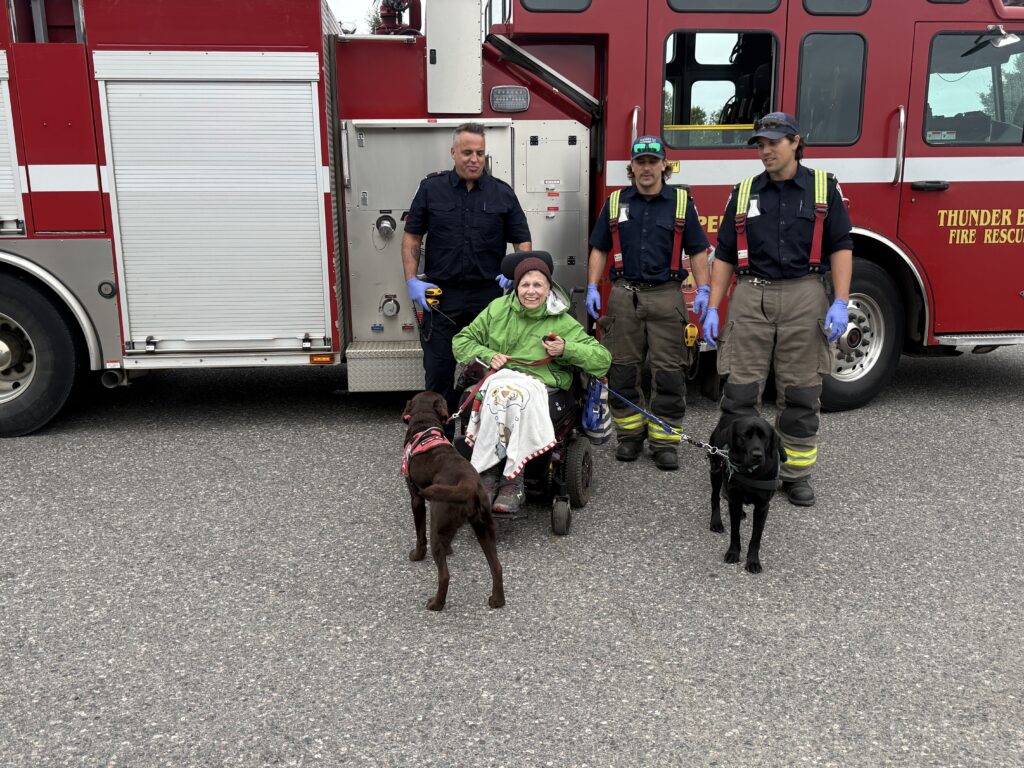
Road Rage (Not Committed by the Lowmans)
(August 15)
Dear Folks,
Today is a catchup text day. We want to tell you a little about where we physically are now, how we got here, and a few general observations that we find interesting and hope that you will, too.
When you are staying in northern Canada, expect to find a boot tray in your room. It can snow most any time, so people don’t bother removing them in summer months.
The Trans Canada is a collection of provincial roads. They vary in quality. Sometimes you have four lanes: two each way. But that can be expensive. So often you have two lanes with periodic passing lanes.
Until you get into quite urban areas, you do not find the highway interchanges common in the States. You get a notice and sometimes a traffic light. But everything is on the same level. The highway runs right through town.
Highway speeds are not as high as in the States.
As is true in northern states, summer is road work time.
So far, Winnipeg is the largest city that we have driven through. We have been intrigued that people will park on the street: right in the lane of traffic closest to the curb.
Today we were trying to find a particular road. There were a number of options, close together. We hesitated. There was a guy on our bumper, honking. We turned. He kept on us, honking. I said one of my most severe thoughts toward him: I wish you would swallow your teeth. He might have done that, but he kept following and honking. So after a bit, I pulled to the curb and made him pass us. Then we followed as he crawled along. We thought about giving him the same treatment–but that would have been wrong. 😇
We left Saskatoon yesterday very late. Dusty had to go out twice during the night. Then she needed three more trips during the morning. So I fed her sparingly and delayed our departure, hoping that she would be OK in the car.
I bundled the Girls into the back and heard nary a peep. After about six hours, we stopped in Nepawa for gas. The girls had a little walk and everyone toileted. Then we got back into Miracle for the rest of the trip to Winnipeg. We are thrilled to report that there were no mishaps.
Dusty has another day of meds and prescription food. She is doing much better. We all got through the night last night fine.
We are staying in an area of Winnipeg called Fort Garry. It is an area of older homes and shops. There is a bakery that was established in 1932. It is close to things while not being in the heart of the city.
They have a strong security presence at the hotel: security people on every floor. This was true when we came the last time. As was the case then, this is because the Holiday Inn is hosting a large firefighters’ conference. How sad that they would fear being targeted for violence.
We will plan to send more tomorrow.
Hugs and Wags.
The Lowman Family
(August 16)
Dear Folks,
Yesterday we went to the Canadian Museum of Human Rights. It is the first such museum in the world. It is the vision of Israel Asper, a prominent lawyer and media mogul whose parents immigrated to Manitoba from Ukraine. He died suddenly of a heart attack before his vision could become a reality. His family, friends, and foundation made sure that his dream became a reality. The museum stands on Israel Asper Way. The tower, which has magnificent views, is called the Israel Asper Tower of Hope.
The museum can be overwhelming. There is a large staff. They are there to answer question and address concerns. People can be overcome.
We were there for about four hours, including a trip into the gift boutique. We went out before that to find ourselves boxed in by a car that had parked illegally. Right next to us was not a true parking space. But someone had parked there anyway. But there are cameras monitoring the building, including the parking area. We shared our dilemma with the museum staff. They reported it to security, who examined the video footage and tracked down the driver of that other vehicle, and she moved it–and, we hope, she learned something .
This is such an amazing place. It can be hard on the soul and spirit. It tells of human rights abuses, over seven floors. But it also is an affirmation of strength and perseverance. The groups who have been abused are still here. The museum does not sugarcoat what happened. It tells stories from a Canadian perspective, which makes sense. So we learn about Canadian prejudice and antisemitism. We are reminded that the Holocaust targeted not just Jews but also Romany (Gypsies) and people with disabilities–a blight upon a pure race.
Al, there was an exhibit on the Acadians, how they were pressured to take sides during the Revolution. When they refused, they were disbursed, they were forced to leave and migrate across the world. But some returned and have finally achieved some recognition. We are sure that you know all about that. Now others learn that story, too.
Here is a photo of us with Roxanne, whom we met while watching a film about Rwanda. Roxanne was a dog groomer. She says that all dogs love her. Dusty wanted to climb up into her lap. She is from Ontario, originally. She and her husband lived in Alberta for decades. Now they have retired to upper British Columbia. She is on a road trip now with a friend back to Ontario. They are learning lots about each other on this trip–you do when you travel with someone. Roxanne is always early. Her friend is always late. But Roxanne is easygoing.
Bev, Kitty, and Megan, in particular, you would LOVE this museum. We would recommend it, though, to anyone. Bev, this could be a great place to take the social work students. People closer to Winnipeg–Jill, Paula, Lucinda–this would make a great trip.
We had not been to a Walmart in many years–since before the pandemic. But we sought one out yesterday. Canada has a great service dog law. But people’s understanding of service dogs varies widely. They often do not understand that the Girls have been trained to wedge against my back so that I don’t roll onto my back. If I do, I can’t move. So it is a necessary medical intervention. Still, the Girls are dogs and hence hairy. So after an exchange with the hotel in Saskatoon, we decided to buy a sheet to put on top of the bed. You can’t buy just a sheet, though. So we now have a set of the most economical queen size sheets that we could find.
Not sure if it is because Winnipeg is relatively close to the States or if it is part of the Walmart culture–but there was lots of accessible parking.
The picture of Jacqui by Miracle is with Colby Kiss. Isn’t that a neat name? We went to a gas station to fill Miracle’s tank this morning before heading out to Thunder Bay tomorrow. I was using as much elbow grease as I had, trying to get some of the bugs off the windshield. (You meet a lot of bugs driving through the prairie.). Colby pulled in with his girlfriend, Vanessa. It is she who took the photo. Colby is from Winnipeg. He lived in Alberta for a bit. Now they are back in Winnipeg. He is owner and general manager of Prairie Containers and Total Moving. We told him about BEYOND LIMITS and our ethos. We gave him a card so that he could follow our blogs. Vanessa was especially interested in Mari and Dusty. So it was an opportunity to educate a bit about service dogs, as well.
So…long text today, folks, to catch you up. Tomorrow is a travel day. Then our last two travel days (to Kirkland Lake and Drummondville) will be very long. Hard to believe that we will be home in a week. The Girls will be thrilled to have their own, leash-less backyard. We are determined to make the most of the upcoming adventures.
Hugs and Wags.
The Lowman Family
A Ruff Day
(August 10)
Dear Folks,
Greetings from Saskatoon. Our hotel is right on the campus of the University of Saskatchewan, who are the huskies. One of the interesting things about this hotel is that the rooms have very little furniture. There is a kitchen, but no table or chairs or desks. There is a Comfy chair that we put our suitcase in since there is no luggage rack.
If the room was hosting the typical two people, they would have to take turns with the chair.
More tomorrow.
Wags and Hugs.
The Lowman Family
(August 11)
Dear Folks,
Here is a bit more. We will include some odds and ends.
We noted that this hotel is on the university campus. It is right next to the stadium complex. They also get many guests who have come to the hospital.
We have remarked on the ethnic diversity we have encountered. Many of the people along the Dempster and Arctic highways are First Nation–it IS their land. The pilots of the ferries know the water like we know a bath tub.
In Whitehorse, many of the workers are from India. In Ft. Nelson, which is in a truly remote area, they have many workers from Bangladesh. In Grande Prairie, Jennifer, the young person who registered us, is from the Philippines. She has some family in Grande Prairie, but most of her family is in the Philippines. She has not seen them since she left. She hopes to go back to visit maybe next year.
Accessibility in Canada is a mixed bag. Most of the hotels have been good. There are always some hiccups: where they put the towels, where the thermostat is, where kitchen supplies are for a suite. But with some ingenuity–and a willingness to ask for help–there are usually workarounds.
Parking is a continual problem. Often–as at the supermarket here–they designate spaces as accessible, but they are just regular spaces with the wheelchair logo. So there is no extra room for a ramp or even to get a manual wheelchair or walker out. So sometimes we have to use the nifty device Al made for us. You can see it in the picture. It is the sticks for two driveway reflectors, which have a join and hook at the end of one so that you can hang it on your door handle and extend it outward. It gets people’s attention and usually raises awareness.
We wind up going to a grocery store every few days for carrots and yogurt for the Girls. If you’re going to be stopping at groceries across Canada, get the rewards card right away. It can really save you money.
If you’re going to travel with one dog, why not make it two? Of course, I had no choice. I could not get up and function without them. Having the two of them–Dusty still being so playful–they accomplish good, healing play every day.
This is a long trip for the Girls. We have already gone more than 8,000 miles. We wonder if they wonder if we are ever going home. They will love the freedom of being off leash.
This time around with service dogs is taking more time than in 2022, our last big trip. Then, Saint was pretty feeble. So we didn’t have to take a walk/run every morning. We didn’t have medication every day (Mari does not have meds, but has to have some peanut butter.). We didn’t have daily coat brushing, nail grinding, and tooth brushing.
This all takes time, but is very grounding for all of us. It is good for all of us to have some semblance of routine.
At the end of this Journey, we will have a long list of people to thank, including all of you (sort of like the Oscars). Today we took a few moments to give ECAD a call. We can never thank them enough for the excellent job that they did with Mari. They taught her so much. And they tried to teach me so much. We continually hear Lu’s voice in our ear saying, “Now, what should you have done in that situation?” Special shoutouts to Lu, Jess, Kathleen, Charlie, Geyser, and the kennel staff and dogs. And we hope that Dale is happy to have that ECAD vest going very far afield. Either way a service dog, truly, there are no limits.
Saskatoon is on the prairie. So it is windy. And it is flat. Jill will understand that better than most. You get great gas mileage: it is like driving across a table. We miss the mountains.
Saskatoon is a very pretty city. It has tree-lined streets, some side streets even have grassy medians.
A few things that we already knew and that this trip has affirmed. We have challenges backing up and parking. Those who know us are smiling and nodding. That’s because we have very poor depth perception. So we do not do it fast. But we do it. Persistence is key.
We send you huge wags and hugs and thanks for your support. We could not do this without you.
The Lowman Family
(August 12)
Dear Folks,
Several stories from today.
I rolled into the breakfast area )on the ninth floor) this morning to see what they had. They have an amazing assortment: cut up fresh fruit; dried fruit; yogurt; eggs; meat; hash browns; pancakes; nuts; oatmeal; cereal; bagels; several types of bread, etc. I am always challenged by breakfast, so I thought I would just grab some whole wheat bread and peanut butter and take it back to the room. Tom came up and introduced himself. He and his wife Maria, who took the photo of Tom with Mari and Mummy, are in Saskatoon to drop their daughter off to begin her studies in veterinary science. They are very proud of her. They have at least two other children–boys. One has left home. The other is still in university and still lives at home.
Tom is what we might call a public health nurse. He works out in the community. He lives right outside of Winnipeg.
Tom had studied Miracle. When he approached, after asking if he could help us, he said, I see from your license plate that you’re from Maine. We agreed. He then said, you have a sticker on the car from a university. Are you a professor? We explained that we had recently retired and now worked full time for BEYOND LIMITS. He had noticed our decals. We told him a bit about BEYOND LIMITS. We asked if we could take a photo of him for our blog. That’s where Maria came in. We gave Tom a business card so that he could check out our Journey.
Then we went up to the university to visit the Museum of Antiquities. We had reached out in June for information on where to accessibly park. Someone in parking had gotten right back to us with information, a map, and a photo. The University of Saskatchewan uses an app called Pay by Phone. It is really efficient. So we got parked all right. Then it was a matter of finding an accessible route to the Peter MacKinnon Building. As we got out of the van, Sean happened by. We asked for help finding the accessible access to the MacKinnon Building and the museum. Sean did not know where the museum was, but went to find out. He returned and led us to it. He said to call when we had finished our visit and he would escort us out.
At the museum, we met Tracene Harvey, who has a Ph.D. In classical archaeology. She is the director and curator of the museum and also teaches art history, runs a summer art camp, collaborates with others across disciplines, such as in history.
Tracene got her bachelor’s and master’s from the University of Saskatchewan. She went further away for her Ph.D. When her current job opened up, she jumped at it.
The museum makes an excellent case for replicas. Many places of former empire–such as the Louvre–now have workshops to make the replicas, the moulds of which are a hundred years old. So now the replicas may be in much better shape than the originals.
The museum talks eloquently about replicas. A replica costs the same, no matter how famous . The statue pictured is of the sleeping hermaphrodite. She comes from the Louvre and is their first replica produced from a 3D printer. So rather than of resin or plaster, it is plastic.
The museum does have some original material: coins, glass, pottery, and a trap door from an ancient Egyptian tomb. They are supported by generous donors.
The museum started out in 1974, as the vision of two professors at the U Saskatchewan, ancient history professor Michael Swan and art history professor Nicholas Gyenes. They started with a dozen replicas displayed across campus. They consolidated into one space on 1981. In 2005, they moved to their present location.
Tracene is from about three hours away. Being the director/curator is like coming home.
Sean grew up on a farm about 1.5 hours away. He and his wife moved to the area in 2022.
The big news of the day is Dusty. Yesterday afternoon she was a bit fussy when we got back to the hotel. That sometimes happens, so we told her that we would go out pretty soon. Mari was also agitated, trying to get Mummy to respond. Dumb Mummy. Dusty had explosive diarrhea. Mummy had a time cleaning that up.
Lucinda had given us some small containers of instant Minute Rice when we saw her. So we gave the Girls (Mari was fine, but we try to give them both a treat, such as the rice) rice, yogurt, and a small amount of kibble for dinner. Dusty’s appetite was fine and she acted as always, except for the diarrhea. She ate eagerly. I took the Girls out. We went to bed. At about 1:30, Dusty woke me. We rushed outside. More of the same problem.
I have to say that if you are going to experience this, it is a great place to do so. The outside lighting is so good that it is like daylight. The front doors appear to always be open. The music in the lobby and entry drifts outside. The Stones sang about Wild Horses to us.
After that, Dusty slept through until morning.
I hoped that things looked a little better this morning. But when we were at the museum, we had to cut our visit short because she was so uncomfortable.
As we got outside, Dusty had another episode. We said to Sean that we needed to take Dusty to a vet. Although he has no pets, he recommended the U Sask Veterinary Medical Centre. Great choice! We had to wait several hours, but what a splendid facility! And they went way above and beyond. For example, the accessible parking there was not adequate. We had tried to straddle the line for two spaces, but did not do it well enough. A Jeep Renegade pickup parked up against us, making it so that we could not open Miracle to access anything. You have to register your license plate with reception. So they tracked down the driver and asked him to move. Then they guided us so that we were parked better. They held Dusty and Mari so that Mummy could use the bathroom.
Finally, Dr. Lee saw Dusty. She examined Dusty and she is in wonderful shape –except for the diarrhea. So we have a few prescriptions and a bit of Rx food to help her turn the corner.
All in all, it was an exciting day. We are just so lucky that this happened here.
Wags and Hugs
The Lowman Family
(August 13)
Dear Folks,
The big news for today is that Dusty is much, much better. We left the vet yesterday with three days worth of prescription food and five days of meds. We didn’t need to go out through the night last night. Everyone rested better.
Dusty was well enough that we could pay a visit to the Ukrainian Museum of Canada today. That’s why we had decided to stay here another day–it is open Wednesday-Sunday. We had missed it on our last trip through in 2022. We were not here on the right days. And, given Dusty’s health scare, how good that we have had another day.
The museum is the child of the Ukrainian Women’s group. It was established in the 1980s. It is built of brick but looks like a traditional Ukrainian structure of logs and mud/clay. It is a treasure dedicated to preserving Ukrainian culture, language, history–memory. There are three galleries with rotating exhibits. The exhibits, in English and Ukrainian, are thoughtfully done. There are so many parallels between Ukrainians and other oppressed peoples, such as those of First Nations and the Métis. There are also parallels between the artwork of the groups. The desire to make even mundane objects of daily living beautiful is so touching.
The photo of the young woman with Mari and Dusty is Marta. Marta is of Ukrainian heritage. Her close family is here. She has extended family in Ukraine. We asked her how they were doing. She said OK. They had chosen to stay in Ukraine. Even if that had not been their choice, they work in the medical field, so they would not have been allowed to leave.
Marta worked at the museum part time while she was in school, including some internships. Now she works there full time.
The museum is open year round. They get many more visitors in the summer. We said that we had lived in North Dakota and talked about winters on the prairie: -50 Celsius–not counting the wind. She said that the most important item of clothing in people’s closets was coats. Nobody had only one. Her grandfather used to say that there was no such thing as bad weather–only bad clothing.
Marta does make pysanky eggs. She says that she is not so accomplished as the creators of the pysanky eggs that they sell at the museum. Artists use a variety of eggs–from hen to goose and larger. They spend hours decorating an egg, using wax and dyes. They don’t blow out the egg’s interior until after it is decorated, since they want the dye absorbed evenly. And since blowing out the content afterward can lead to cracking, people often leave the content in, since it will dry up.
While we were there, a summer camp of children left the building for some time outdoors. They were mostly new arrivals from Ukraine. Their leader was a fair-haired young woman (white blond hair in braids) of about 30 who had come to Canada with her teenage brother at the start of the Russian invasion into Ukraine. Her brother was 16 then. He could have been drafted at age 18. Their mother did not come to resettle, but has come to visit. They do have other family here. They recently attained permanent residency status. Do the brother is safe.
The young woman had met her special someone here. He is of Ukrainian descent. She is teaching him Ukrainian. They will be married this winter.
Before we close, we wanted to circle back around to our hotel, the Staybridge Suites. Yes, the room furnishings are a bit odd. It is a terrific facility, though. It consists of two towers. One is the Staybridge Suites. The other is the Holiday Inn Express. Whenever we can, we opt for a suite–they work better for us. There are LOTS of dogs here. We have a lovely room on the first floor, at the end of the corridor. We have attached a photo of the lobby. We had mentioned that breakfast is provided on the ninth floor. We think that this is, at least in part, because the elevators are glassed in and you get splendid views of the surrounding area.
Tomorrow we move on to Winnipeg. We are sure that the Holiday Inn there will not be so nice. But we will make it work.
Wags and Hugs.
The Lowman Family.
Dear Folks,
This is a PS: we feel so blessed and lucky that we left the veterinary medical centre with someone who will soon be all well and strong again. As an animal hospital, they take emergencies, giving them priority. Some are too sick or injured to help. That hit us hard as we were leaving the centre. We were blocked in by a fire truck. Next to it was an ambulance. Not for the animals, surely.
While Dusty was being treated, we heard a woman sobbing hysterically. We think that the ambulance may have been for her–or someone else with uncontrollable grief. We are very, very lucky. 🙏
“People Here Drive Like They’re Crazy!”
(August 8)
Dear Folks,
Greetings from the laundry room of the Encore Suites in Grande Prairie, AB. You can see Mari hard at work on the floor. The man in the striped shirt is Jacob. His wife just had a baby: their third boy, their fifth child. They live in Hines (sp.?). He farms grain and beef cattle and does logging in the winter. They have a big house and yard–a great place for children. They have grades K-12 in their village. Jacob has been farming there with his father for about 10 years.
We thought that you would like the photo of the Girls with the statue for Canadian Guide Dogs for the Blind.
Lots of cloud photos today. Most are from the area of Dawson Creek, BC–officially the start of the Alaska Highway.
We are sorry to leave the mountains behind.
Alberta has farming. What some folks might not realize is that it is a major source of energy. There are large groups of refineries.
The lady in the photo is Kim, the restaurant manager at the Woodlands Inn and Suites. She helped us load Miracle and we got to talking a little.
Kim has a good friend Christy who was seriously injured in an automobile accident. She now uses a power chair. She has had to go through extensive rehabilitation so that she can function and take care of her children. Her house is wheelchair accessible. While Christy has been going through this, other members of her family have had different health crises.
Christy had had to go to a more urban area: Ft. St. John. She hasn’t really been able to be home in Ft. Nelson in eight years. They think that she will be able to be home soon.
Christy is part of an organization that advocates for disability rights. In Ft. Nelson, besides the typical handicapped signs (blue with a character motionless in a wheelchair), Ft. Nelson has purple signs with an active person in a wheelchair.
Christy is lobbying for greater autonomy in her personal care.
Kim has been in Ft. Nelson since she was four. It is where her father, sister, and her immediate family live. It is where she wants to stay.
More tomorrow. For now, we will get this on its way.
(August 9)
Dear Folks,
Today we went to the Grande Prairie Museum (which has 55,00 artifacts) and the Heritage Village-a number of historic structures donated, restored, and lovingly outfitted. It’s impressively accessible–ramps and automatic buttons for the doors galore. The Girls seemed to like the boreal forest exhibit best. They certainly knew that the animals were not alive. But they also knew that they HAD been alive. The amount of work that has gone into that place is incredible. And it is all free and open to the public. It also houses regional archives. It takes its immigrant heritage seriously. There was a large influx of Poles around the time of the Great Depression, for example. They homesteaded, worked hard, and helped shape the culture and make Alberta the bread basket of Canada.
We started out the day receiving an act of kindness. Grande Prairie is a good-sized hub for the surrounding area. It has very busy streets connecting one strip mall to the next. To walk, we must cross a wide street to get to a sidewalk. We were waiting to do so. A young woman walked by. We said hello. She looked like the stereotypical tough person: black shorts, black tank top, lots of tats. After she passed us, she turned around and asked if we were trying to cross the street. When we said that we were, she came back and walked right out into the street, raising her arms to stop the traffic. She was very effective. We crossed the road and called a fervent thank you. She called back, “People here drive like they’re crazy!” To which we agreed.
After the museum, we went to a gas station we had visited on our last trip to Grande Prairie, on our way up to Tuk. Then we were able to pump. This time we could not. We had to go into the store–an On the Run–and ask the clerk for help. He could not get that pump to work for us, either. So he asked us to move to a different pump.
When we started trying to get gas, no one else was there. Now all of Grande Prairie showed up. The poor clerk: he ran himself ragged trying to mind the store and help us. We did finally fill up for the long trip to Saskatoon tomorrow.
Just a couple more notes:
In Whitehorse, we stayed at the Raven Inn: the most expensive lodging on our trip. We had no choice: it is the only place wheelchair accessible there right now. It considers itself luxury on the edge of the wilderness. The staff are lovely. But on our two stays this time: going up and back down from Tuk, they charged us a penalty cleaning fee. I explained that the Girls had been trained to wedge against my back so that I do not roll over and become unable to move. It’s a medical necessity. That made no difference. We also learned that they ordinarily do not take the duvet covers off and wash them after each guest. Yuck!
We were wild about the Woodlands Inn & Suites. It feels like home. We could completely relax. Where are you going to go today and find such extras in your bathroom as a sewing kit and a shower cap? The people are so kind. Since I am not a breakfast person, they fixed me a little Care package of rye toast , peanut butter, and sliced tomato. It is worth going out of your way to go there.
Ft. Nelson is also facing the problems that many communities are having: people are living longer and surviving conditions that would have once killed them. So there are more people with disabilities. And many businesses and essential services are inaccessible. Neither dentist is accessible.
Kim shared the story of a man who had had a leg amputated because of diabetes. He was waiting outside a store in the cold one day. She stopped and asked him why. He said he was waiting for someone to come along, notice him, and open the door. She did so.
We urged her to organize at the grassroots level.
Tomorrow is a very long drive to Saskatoon. So you may not hear much from us. We have wished that you could all be with us for the Arctic Highway, the Dempster Highway, and the Alaska Highway. They are challenging and yet also magnificent.
As we say in the County: not gonna lie. We are not fans of the prairie. And that’s what’s coming up for the next 1,000 plus miles.
Wags and Hugs.
The Lowman Family
